Your basket is currently empty!
Overunity Theories and Technologies
Introduction to the Overunity Theories and Technologies
In an era where the demand for clean, sustainable energy solutions has never been more urgent, overunity technologies offer a bold vision of the future. This eBook explores groundbreaking theories and practical implementations that challenge the conventional limits of energy production, promising systems that can generate more energy than they consume. By delving into the pioneering work of Nassim Haramein, Walter Russell, and Stephen Wolfram, we connect their visionary theories of the universe to the development of overunity devices.
Nassim Haramein introduces us to the concept of the quantum vacuum and its untapped energy potential, while Walter Russell’s wave-based cosmology provides a framework for understanding energy as oscillatory forces of compression and expansion. Stephen Wolfram’s computational theory of the universe offers a new lens through which to view energy generation, through hypergraph structures and computational emergence.
These theoretical explorations are paired with real-world efforts to develop overunity devices. Companies like Holcomb Energy Systems, Terragen, and InfinitySAV are pushing the boundaries of what is possible, offering prototype technologies that claim to harness energy from magnetic fields, harmonic resonance, and the quantum vacuum itself. The implications of these technologies for society, industry, and the environment are profound, with the potential to transform global energy systems, reduce carbon emissions, and offer decentralized energy solutions to communities worldwide.
Through this eBook, we aim to bridge the gap between theory and practice, presenting a detailed exploration of both the scientific foundations and the experimental implementations of overunity devices. Whether you are a researcher, energy professional, or simply curious about the future of sustainable energy, this eBook offers a comprehensive look at the possibilities and challenges of overunity technologies.
Welcome to a journey into the future of energy.
Chapter 1: A Detailed Technical Exploration of Nassim Haramein’s Unified Field Theory
Introduction to Nassim Haramein’s Recent Work
Nassim Haramein’s unified field theory, as presented in his recent paper The Origin of Mass and the Nature of Gravity (2022), provides a highly sophisticated framework for understanding the nature of mass, gravity, and quantum vacuum fluctuations. His theory builds upon decades of work in quantum mechanics and general relativity, proposing that mass is not an intrinsic property of particles but rather emerges from the interactions of particles with the quantum vacuum field.
Haramein argues that the quantum vacuum is a sea of energy, teeming with fluctuations that can give rise to measurable physical phenomena, such as mass and gravity. These fluctuations, typically referred to as zero-point energy (ZPE), play a crucial role in his theory, serving as the primary source of mass and energy for particles like protons. His work opens up exciting possibilities for technological applications, especially in the realm of overunity devices, which aim to extract energy from the quantum vacuum.
Key Theoretical Concepts
- Zero-Point Energy (ZPE) and Quantum Vacuum Fluctuations
- Overview: ZPE is a fundamental concept in quantum field theory (QFT) and quantum electrodynamics (QED), representing the lowest energy state of a quantum field, even in the absence of particles. In classical physics, a vacuum is often thought of as “empty,” but in quantum mechanics, the vacuum is dynamic, filled with fluctuations and virtual particles that continuously appear and disappear. Haramein posits that these fluctuations are responsible for the emergence of mass and energy.
- Mathematical Formulation: The energy density of the quantum vacuum at a given frequency $( \nu )$ can be derived from Planck’s law of black-body radiation and modified to include zero-point contributions. The energy density of the vacuum at temperature $( T = 0 )$ is given by:
$$[
\rho_{\text{vac}} = \int_0^\infty \frac{8 \pi \nu^2}{c^3} \left( \frac{h \nu}{2} \right) d\nu]$$
This integral yields the zero-point energy density of the vacuum, which can be regulated to avoid infinite divergence by introducing a cutoff frequency $( \nu_{\text{max}} )$ at a scale like the Planck length $(\ell_p )$.
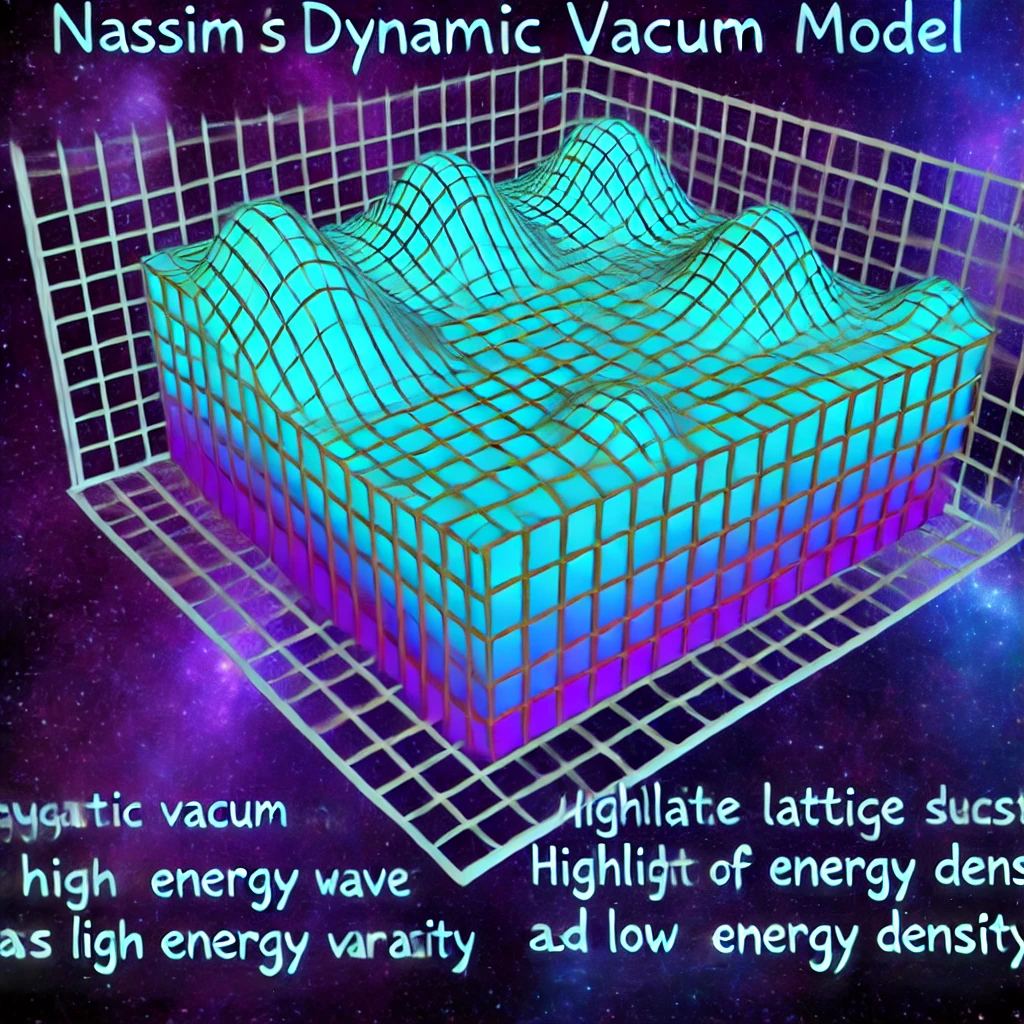
Here is the 3D diagram illustrating Nassim Haramein’s dynamic vacuum model, showing oscillations and fluctuations with regions of varying energy density as described.
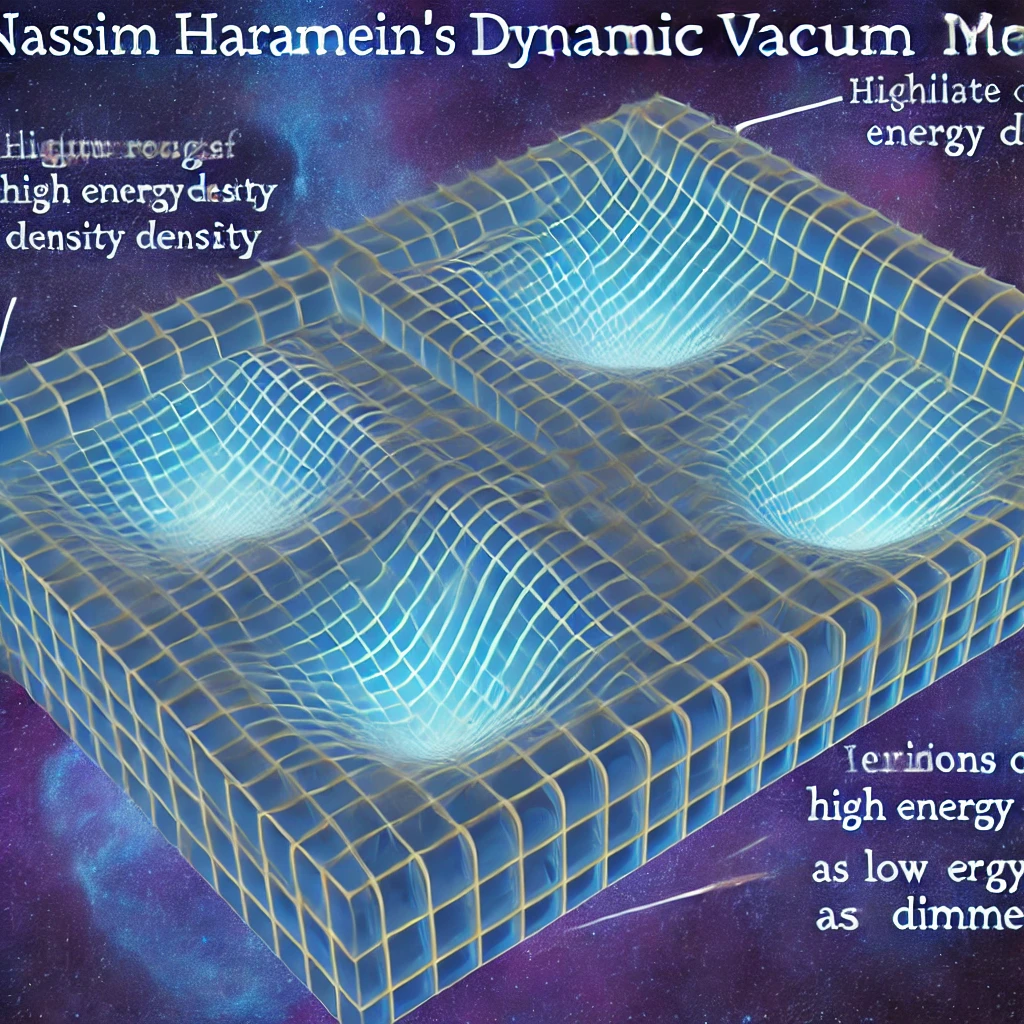
This 3D diagram illustrates the dynamic vacuum model, showing a lattice with oscillations and fluctuations. Regions of high and low energy density are highlighted to depict the vacuum’s varying properties.
- Proton as a Quantum Vacuum Resonator
- Resonant Cavity Model: Haramein’s theory introduces the concept of the proton as a resonant cavity for quantum vacuum fluctuations. This idea stems from his Schwarzschild Proton model, where he analogizes the proton to a mini-black hole. The proton’s internal energy can be derived from the interaction of its internal geometry with the vacuum fluctuations, which create a harmonic structure. Haramein links this energy to the Casimir effect, where the suppression of vacuum modes within a confined space generates a force.
- Casimir Force and Proton Mass: The Casimir effect can be applied to the proton as a confined space that excludes certain wavelengths of vacuum fluctuations, thus creating an energy gradient and generating the proton’s mass. This is quantified by the equation:
$$[
E_p = 4 \frac{\hbar c}{r_p}
]$$
where $( r_p )$ is the proton’s charge radius and $( \hbar )$ is the reduced Planck constant. This equation reveals that the proton’s mass-energy is a direct result of the vacuum fluctuations inside its spatial confinement.
Mathematical Formulation of Haramein’s Theory
Haramein’s theory utilizes advanced mathematical structures, including correlation functions, quantum harmonic oscillators, and general relativity to unify the fundamental forces of nature at both the quantum and cosmological scales.
- Vacuum Energy Density: The vacuum energy density $( \rho_{\text{vac}} )$, which contributes to the mass of the proton, can be described as a function of the volume occupied by quantum vacuum fluctuations. The energy density of the vacuum is expressed as:
$$[
\rho_{\text{vac}} = \frac{6 \hbar c}{\pi r_p^4}
]$$
Here, $( r_p )$ is the proton radius, and the constant $( \hbar )$ is the reduced Planck constant. Haramein argues that this energy density is sufficient to account for the entire mass of the proton, without invoking the Standard Model’s quark confinement models. - Planck-Scale Dynamics: At the Planck scale, quantum fluctuations are thought to be extremely energetic. Haramein’s work extends to the Planck scale, where the gravitational force becomes unified with the strong force. The Planck length $( \ell_p )$ is a natural limit where quantum effects dominate gravitational interactions, and Haramein’s theory suggests that the proton is intimately connected to this fundamental scale through its interaction with the vacuum field. The Planck energy $( E_p )$ can be described as:
$$[
E_p = \sqrt{\frac{\hbar c^5}{G}}
]$$
where $( G )$ is the gravitational constant. This energy is significant in understanding the relationship between vacuum fluctuations and the emergence of mass. - Mass-Energy Relation and Unified Field: Haramein demonstrates how the curvature of spacetime, as predicted by Einstein’s field equations, can be linked to quantum vacuum fluctuations. The mass-energy equivalence, given by $( E = mc^2 )$, is extended in Haramein’s work to show that the mass $( m )$ of particles is directly related to the energy extracted from the quantum vacuum through spacetime curvature. In his paper, Haramein provides a specific relation between the proton’s energy and the vacuum fluctuations, demonstrating that the mass of the proton is entirely emergent from vacuum effects.
Overunity Applications Inspired by Haramein’s Unified Field Theory
1. Quantum Vacuum Resonator Overunity Device
Overview:
Building on Haramein’s idea that the proton acts as a resonant cavity, an overunity device could be designed to harness energy from the quantum vacuum in a similar manner. The device would function as a large-scale quantum vacuum resonator, tuned to amplify and extract energy from the zero-point field.
Mechanism:
- The device would be constructed using highly conductive materials shaped into resonant cavities that exclude certain vacuum modes. By controlling the geometry and size of these cavities, the device could selectively enhance vacuum fluctuations that match the resonant frequency of the cavity.
- Inside the cavity, electromagnetic vacuum fluctuations would create an energy gradient, similar to the Casimir effect. This energy could be harnessed using quantum photonic technologies to convert the vacuum energy into usable electrical energy.
Mathematical Framework:
Using Haramein’s formulation of vacuum energy density, the resonator’s energy output $( E_{\text{out}} )$ can be approximated by:
$$[
E_{\text{out}} = \int_{0}^{\infty} \frac{8 \pi \nu^2}{c^3} \left( \frac{h \nu}{2} \right) d\nu
]$$
where $( \nu )$ is the resonant frequency, and $( c )$ is the speed of light. By adjusting the cavity’s dimensions to resonate at specific frequencies, the device can maximize the extraction of quantum vacuum energy.
Example:
A prototype device could be constructed with nano-scale resonators engineered to harness energy from specific quantum vacuum modes, similar to the proposed “Casimir battery” models. Such devices could be designed to operate at room temperature and offer a continuous source of energy with minimal input.
2. Proton-Based Energy Extraction Device
Overview:
Inspired by the Schwarzschild Proton model, another overunity device could be designed to replicate the proton’s ability to extract energy from the quantum vacuum. The device would use a dense core of material, engineered to create a resonant interaction with vacuum fluctuations similar to the proton’s interaction.
Mechanism:
- The core would be composed of a material capable of sustaining high-frequency oscillations, acting as a vacuum resonator. The surface of the core would mimic the proton’s charge radius, creating a boundary condition that excludes specific quantum vacuum modes.
- By harnessing the Casimir effect and similar quantum phenomena, the device could generate energy from the vacuum fluctuations surrounding the core.
Mathematical Framework:
The energy extracted by the device would be derived from Haramein’s proton energy equation:
$$[
E_p = 4 \frac{\hbar c}{r_p}
]$$
This equation suggests that by scaling the device to operate at frequencies and dimensions similar to the proton, significant energy could be extracted from the quantum vacuum.
Example:
Such a device could serve as a prototype for a quantum vacuum energy generator, designed to power small electronic devices or provide a continuous energy source in remote locations. Advances in materials science, such as graphene and metamaterials, could enhance the device’s ability to interact with vacuum fluctuations.
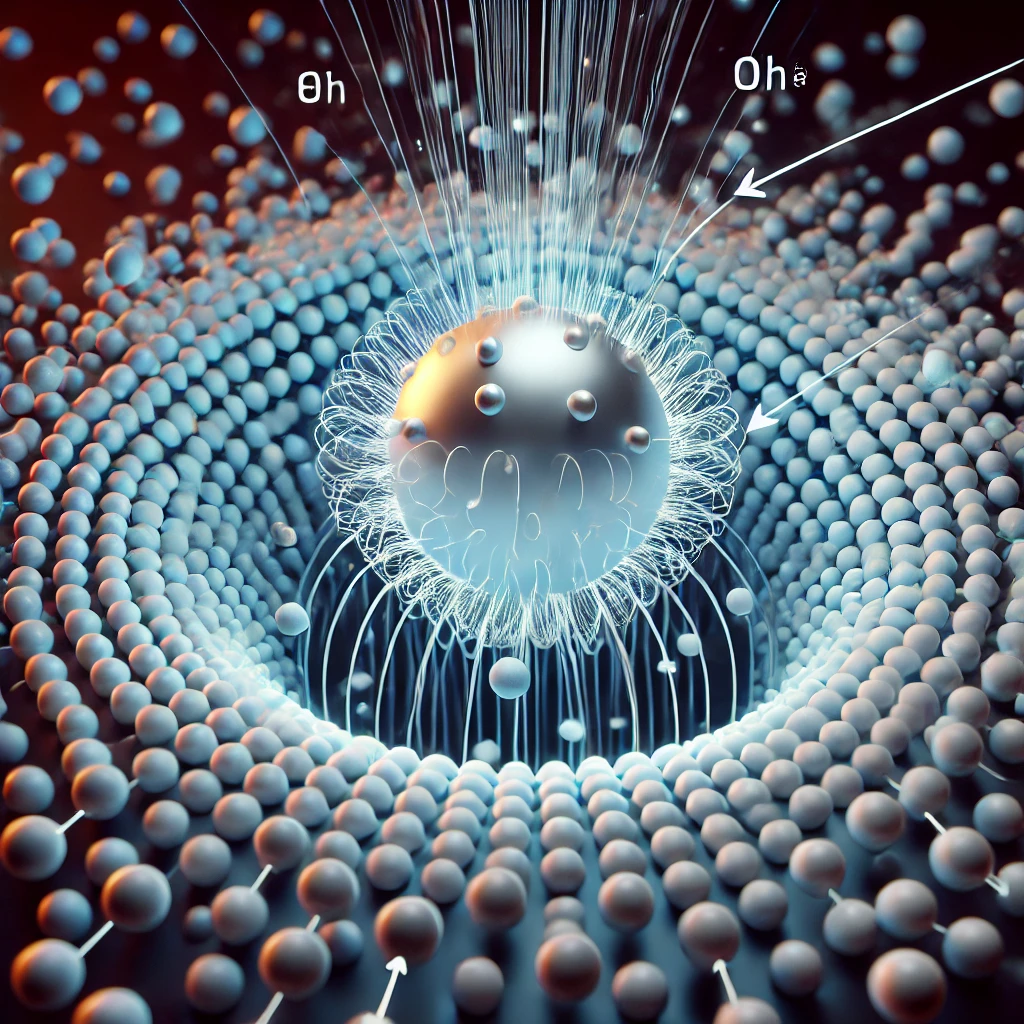
A schematic of a conceptual overunity device based on Nassim Haramein’s theory. The device consists of a spherical resonance chamber where quantum vacuum fluctuations are captured and amplified. Arrows represent the flow of energy from the quantum vacuum into the resonator, where it is converted into usable electrical power.
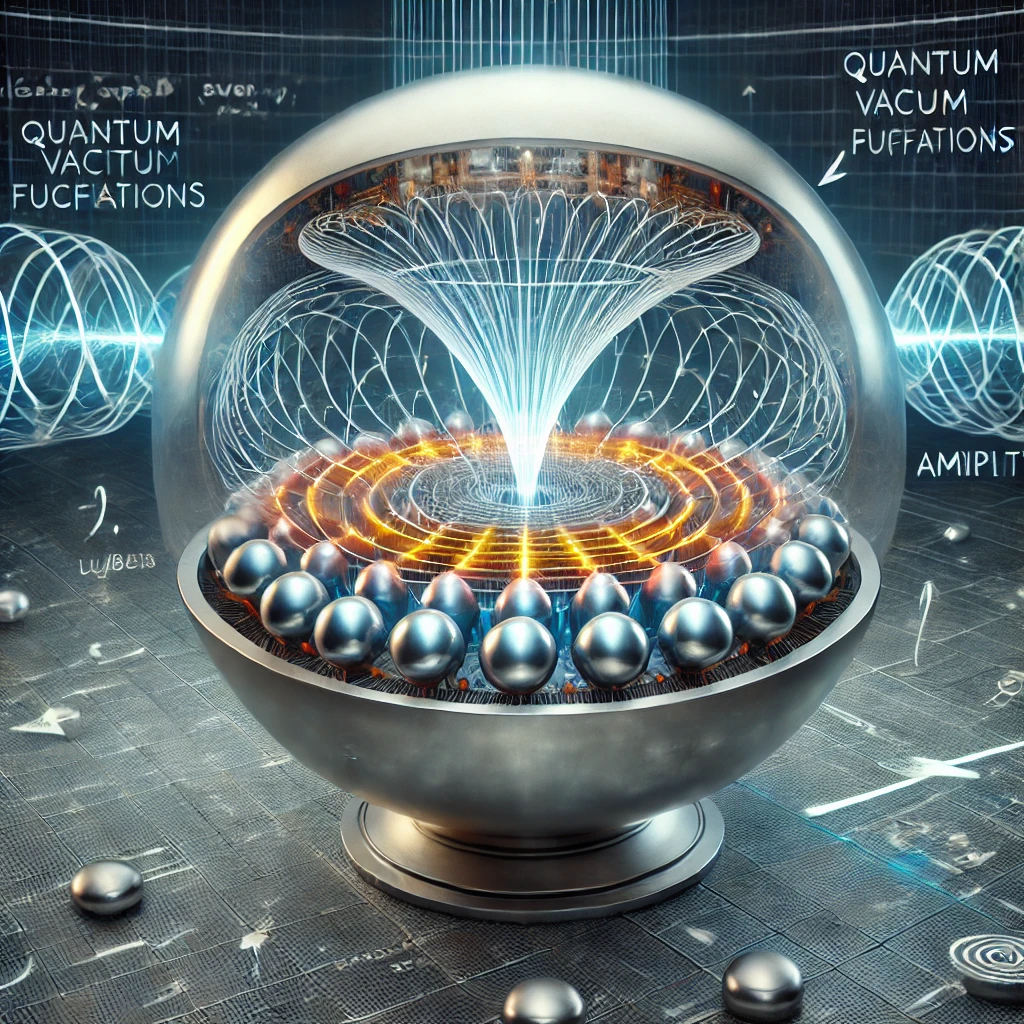
A 3D visualization showing a proton interacting with quantum vacuum fluctuations. The proton is depicted as a small sphere with energy waves radiating outwards, interacting with the surrounding quantum foam. This foam is represented as tiny, fluctuating energy bubbles. The concept of energy extraction from these vacuum fluctuations is depicted with arrows indicating energy flow from the vacuum to the proton.
Linking to Related Resources
For readers interested in diving deeper into the topics of zero-point energy, vacuum fluctuations, and overunity devices, here are some key resources:
- Resonance Science Foundation & International Space Federation: Nassim Haramein’s organization provides a wealth of resources and research papers on unified field theory and quantum vacuum energy. Resonance Science Foundation & International Space Federation
- Casimir Effect Research: The Casimir effect is critical to understanding energy extraction from vacuum fluctuations. A detailed explanation of the Casimir effect and its potential applications can be found on the Physics World website.
- Quantum Electrodynamics (QED): Richard Feynman’s work on QED provides a foundation for understanding the quantum vacuum. For more on QED, visit Stanford Encyclopedia of Philosophy.
- Quantum Gravity Research: This research group explores the unification of quantum mechanics and general relativity, with theories closely related to Haramein’s work. Quantum Gravity Research
Conclusion
Nassim Haramein’s unified field theory provides a bold and innovative framework for understanding the fundamental forces of nature, uniting gravity, electromagnetism, and quantum mechanics. His latest research suggests that mass, particularly the mass of the proton, emerges from interactions with quantum vacuum fluctuations. These fluctuations, if harnessed properly, offer an exciting possibility for overunity devices that could extract usable energy from the quantum vacuum.
Through advanced mathematical formulations and a deep understanding of quantum and gravitational forces, Haramein’s work paves the way for new technologies that could revolutionize energy generation. This chapter has explored the potential of such devices, providing both theoretical foundations and practical examples. Future chapters will build on this work by comparing Haramein’s theory with the cosmology and physics of Walter Russell and Stephen Wolfram, further exploring the possibility of unified energy systems.
Chapter 2: Walter Russell’s Cosmology and Physics in The Universal One
Introduction to Walter Russell’s Cosmology
Walter Russell’s cosmological ideas, as laid out in The Universal One (1926), present a radically different vision of the universe from conventional scientific frameworks. He introduces a “Two-Way Universe,” where everything in existence operates through the interplay of opposing forces: centripetal (gravitational) and centrifugal (radiative). Russell suggests that all matter is light in varying degrees of compression and expansion, and the universe is a continuous expression of a single, unified Mind.
This chapter will explore Russell’s theory in a technical, detailed manner, focusing on his unique interpretation of the universe’s electromagnetic dynamics and the implications for overunity devices. His work posits that energy can be harnessed directly from the oscillatory nature of light and the rhythm of the universe. Russell also touches on the periodicity of matter, the formation of elements, and how understanding the wave-nature of reality can lead to new technologies.
Key Theoretical Concepts from The Universal One
- The Wave Principle:
Russell’s The Universal One emphasizes the central role of the wave principle in the structure of matter and energy. According to him, the entire universe operates through cycles of compression and expansion, which he describes as “two-way motion.” These oscillations of light are responsible for the creation and dissolution of matter, where matter is simply light at rest in a state of gravitational compression, while energy is light in motion, radiating outward.
- Mathematical Framework:
Russell provides an understanding of light and matter as oscillatory systems, where waveforms describe their behavior. His wave equation can be interpreted in terms of energy densities:
$$[
E = \frac{hc}{\lambda}
]$$
where:- $( E )$ is the energy of light,
- $( h )$ is Planck’s constant,
- $( c )$ is the speed of light,
- $( \lambda )$ is the wavelength. This foundational equation, though simple, is expanded in Russell’s work to explain the cyclical nature of all forms in the universe.
- Polarization and Depolarization:
According to Russell, polarization and depolarization are responsible for creating the cyclical patterns of energy movement in the universe. These processes underlie both atomic formation and the motion of celestial bodies. Polarization is described as a focusing or compressing action, while depolarization is the expansion or radiative action.
- Example: Consider the formation of an atom, which involves compressing light into denser, more material states (polarization) and then releasing it through radiation (depolarization). This cycle mimics the behavior of stars and black holes, with stars representing polarized bodies that will eventually radiate back into space upon death.
- The Nature of Light as Matter:
Russell’s core assertion is that light is the building block of all matter. He argues that matter is simply light compressed into visible form. In his view, the physical universe consists of layers of light oscillating at different frequencies. This leads to the idea that elements are arranged in octaves, like musical notes, with different properties and behaviors depending on their “frequency.”
- Mathematical Interpretation:
Russell uses a harmonic system to describe the elements, where each element belongs to a certain frequency band, represented mathematically as:
$$[
f_n = f_0 \cdot 2^n
]$$
where:- $( f_n )$ is the frequency of the nth element,
- $( f_0 )$ is the base frequency of the harmonic octave,
- $( 2^n )$ represents the doubling of frequency for each subsequent octave. This model suggests that energy manipulation through resonance can allow for novel ways to interact with matter and energy.
- Centripetal and Centrifugal Forces:
Russell’s description of the universe hinges on the balance between centripetal (gravitational) and centrifugal (radiative) forces. The two forces are in constant dynamic equilibrium, with the former pulling matter inward toward centers of mass (such as stars and planets), and the latter radiating it outward into space.
- Overunity Potential:
Overunity devices could theoretically be constructed by exploiting this balance. If a system could be designed to alternate between these two forces in harmony with natural cycles, energy could be extracted without violating conservation laws. Such a device would need to maintain a perfect balance between these forces to achieve a self-sustaining energy cycle.
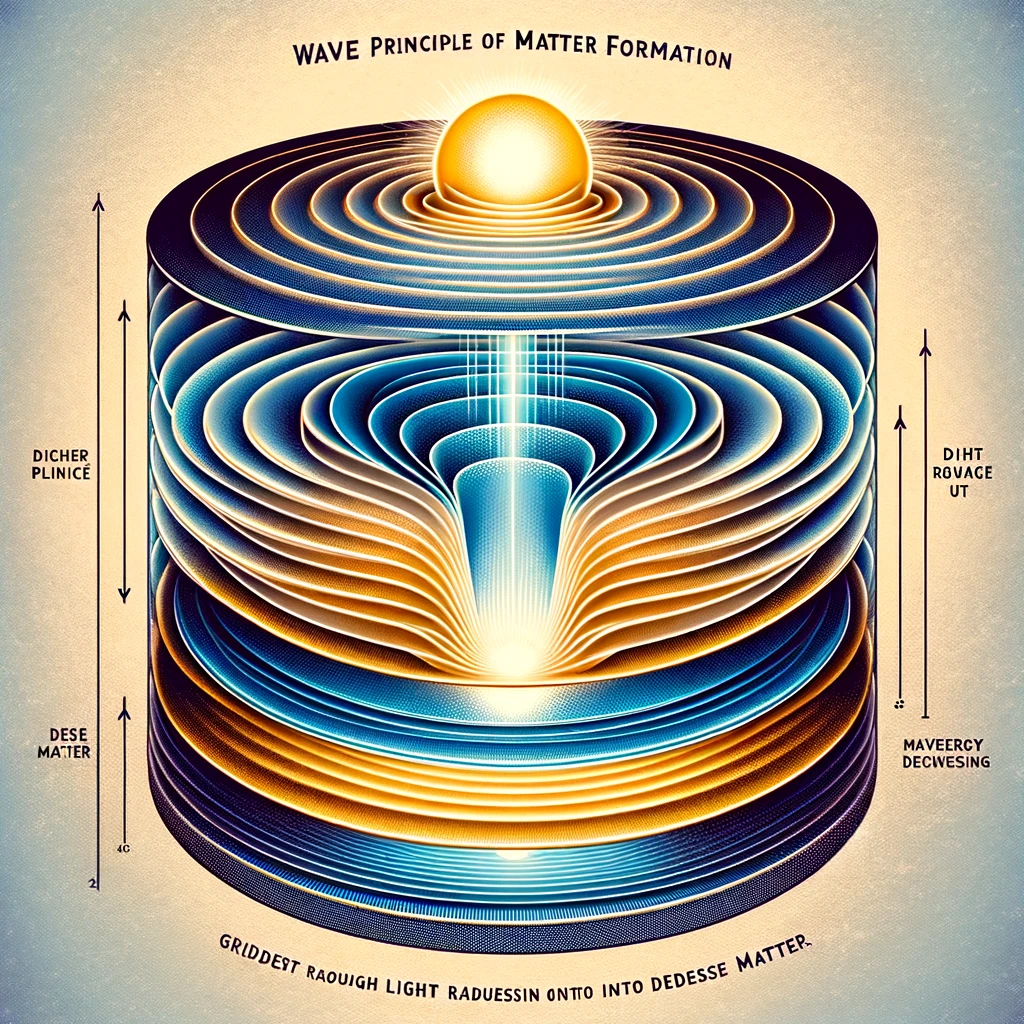
A diagram showing the wave principle of matter formation according to Walter Russell. The illustration depicts how matter is formed through waves of light being compressed into dense matter, with concentric waveforms representing the compression process. A gradient from light (radiating outward) to dense matter (compression inward) is shown to explain how energy transitions into different states of matter.
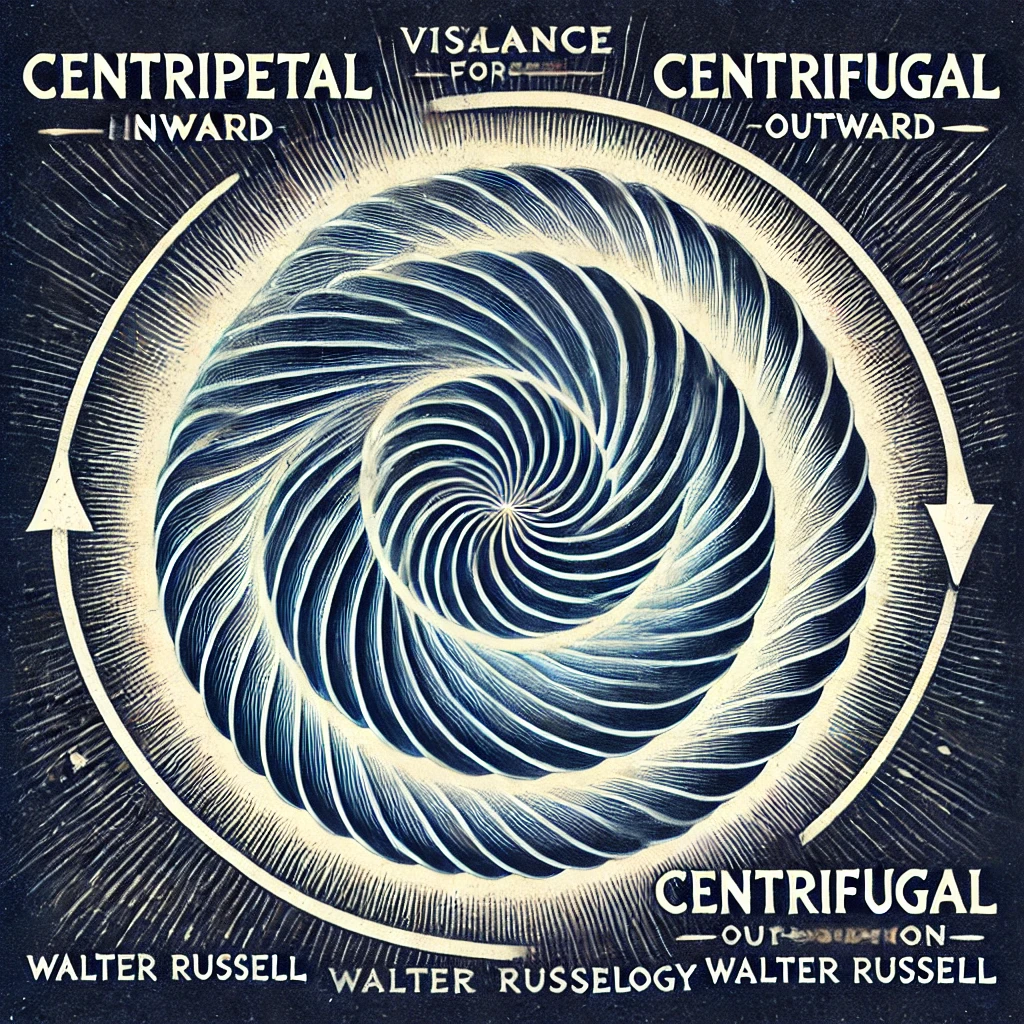
A visual representation of the balance between centripetal (inward) and centrifugal (outward) forces in Walter Russell’s cosmology. The diagram shows two opposing spiral forces—one pulling inward and the other radiating outward—illustrating how energy moves in cycles of creation and dissolution. The forces are balanced, with arrows indicating the cyclical nature of this motion.
Overunity Applications Based on Russell’s Theory
Russell’s idea of energy as light in varying states of compression and expansion provides an intriguing framework for the development of overunity devices. By tapping into the cyclical forces of polarization and depolarization, it may be possible to design devices that harness the inherent energy within the electromagnetic wave structure of the universe.
1. Harmonic Resonator for Energy Extraction
Overview:
One possible overunity device inspired by Russell’s work could involve constructing a resonator that operates on the harmonic principles of light and energy compression. Such a device would leverage the cyclical nature of waveforms to oscillate between high-energy states and low-energy states, continually generating energy.
Mechanism:
- The device would be designed to oscillate between polarized (gravitational) and depolarized (radiative) states. As light is compressed into a polarized state, the system would capture the increased energy density, and then release it during depolarization.
- By tuning the system to match natural harmonic frequencies in the environment (e.g., solar radiation, planetary vibrations), the resonator could amplify these oscillations to produce usable energy.
Mathematical Formulation:
The energy output $( E_{\text{out}} )$ from the harmonic resonator could be modeled as a function of its natural frequency $( f )$ and the amplitude $( A )$ of the oscillation:
$$[
E_{\text{out}} = \frac{1}{2} A^2 f^2
]$$
By optimizing the amplitude and frequency to resonate with natural harmonic frequencies, it is possible to enhance the energy output of the system.
2. Russell’s Polarization-Based Overunity Device
Overview:
Another potential device based on Russell’s ideas could use polarization mechanics to extract energy. Russell’s concept of polarized light, where energy is stored in a compressed form, suggests that manipulating these polarizations at high frequencies could provide a source of usable energy.
Mechanism:
- A device using polarization could be structured as a spherical resonator, where the center acts as the gravitational (centripetal) core, pulling light into a compressed state. As the light reaches a critical level of polarization, it would be released in a depolarized form, generating energy in the process.
- The key would be in tuning the compression and expansion cycles to match the natural oscillatory patterns in the environment, similar to how planets and stars naturally balance these forces.
Mathematical Formulation:
The power output from such a device could be expressed in terms of the polarization strength $( P )$ and the frequency of oscillation $( \nu )$:
$$[
P_{\text{out}} = P \cdot \nu^2
]$$
This equation suggests that by maximizing the polarization strength and frequency, energy can be efficiently extracted from the oscillatory system.
Mathematical Insights from Russell’s Cosmology
- Waveform Theory and Periodicity of Matter:
Russell views all matter as varying manifestations of waveforms. These waves are not just electromagnetic but include gravitational and radiative components. The periodicity of these waves follows a harmonic structure, meaning that understanding the nature of these cycles allows for the prediction of elemental behavior and energy patterns. - Harmonic Series and Elemental Formation:
The elements, according to Russell, are formed in a harmonic series of octaves, with each element representing a different frequency in this system. By manipulating these frequencies, it may be possible to transmute one element into another or to extract energy from the process of harmonic resonance. Russell’s wave-based model of elemental formation opens the door for energy devices based on harmonic resonance, where materials could be manipulated to release stored energy in the form of radiation or electricity. - Centripetal and Centrifugal Balancing:
Russell’s descriptions of the forces of gravity and radiation as being balanced yet opposing forces form the backbone of his cosmological theory. By harnessing this balance, it is possible to design energy systems that exploit the natural flows of energy in the universe. Devices built on this principle could tap into gravitational compressive forces and radiative expansive forces, extracting energy from their equilibrium.
Linking to Related Resources
For a more in-depth exploration of Walter Russell’s ideas, consider the following resources:
- University of Science and Philosophy: The official site of Walter Russell’s foundation, where The Universal One and other works are discussed in detail. University of Science and Philosophy
- Cosmology of Light: An article series explaining Russell’s theories of light and its role in matter creation. Cosmology of Light
- Periodic Wave Theory: For additional information on how waves and harmonics shape matter, this article provides a deeper dive into wave mechanics. Periodic Wave Theory
Conclusion
Walter Russell’s cosmology in The Universal One offers an entirely new way of thinking about the universe and its energetic principles. By understanding the wave nature of
reality and the balance between compression and expansion, it may be possible to harness energy from the universe’s natural oscillations. Russell’s work provides a theoretical foundation for overunity devices, which could extract energy from harmonic resonances and polarization effects. In the next chapter, we will explore Stephen Wolfram’s computational universe and how it might intersect with Russell’s wave-based cosmology.
Chapter 3: Stephen Wolfram’s Computational Universe and Its Connection to Overunity Devices
Introduction to Stephen Wolfram’s Computational Universe
Stephen Wolfram’s Computational Universe is a revolutionary approach to understanding the fabric of reality, positing that the universe operates according to simple computational rules. In his work, particularly in A New Kind of Science and his Wolfram Physics Project, Wolfram suggests that space, time, and matter emerge from the interactions of discrete elements that evolve according to computational rules. This approach diverges from traditional physics by treating the universe not as a continuous system governed by differential equations but as a collection of discrete structures, such as hypergraphs and cellular automata.
Wolfram’s theories have profound implications for both physics and technology. His computational model may offer new ways to harness energy, potentially inspiring the design of overunity devices that tap into the fundamental computational processes of the universe.
This chapter explores the technical details of Wolfram’s computational model, focusing on the implications for overunity technology, the mathematical foundations of hypergraphs, and potential device designs that could harness computational irregularities to generate energy.
Key Theoretical Concepts from Wolfram’s Computational Universe
- Hypergraphs as the Foundation of Reality:
- Wolfram proposes that the universe can be described as a large, evolving hypergraph. A hypergraph is a generalization of a graph in which edges can connect more than two nodes. In Wolfram’s model, these nodes represent points in space, and the edges represent relationships or connections between them. The evolution of these hypergraphs through simple computational rules leads to the emergence of familiar physical phenomena like space, time, and matter.
- Mathematical Representation:
The universe is described as a dynamic hypergraph, $( G $), which evolves over time according to computational rules. The evolution of the hypergraph can be represented as a sequence of operations on the graph:
$$[
G_{t+1} = f(G_t)
]$$
where $( f )$ is a rule that governs how the graph evolves at each step $( t )$. Over time, this process generates complex structures that we perceive as space, time, and particles. These rules are typically local, meaning that they only affect neighboring nodes and edges in the graph. However, even with simple rules, the system can give rise to highly complex and emergent behavior, which Wolfram argues can explain everything from the nature of particles to black holes.
- Emergence of Space-Time:
- In Wolfram’s model, space-time is not a smooth continuum but an emergent property of the underlying hypergraph structure. The connections between nodes (points in space) represent distances, and the evolution of the hypergraph represents the passage of time. Space-time curvature, and therefore gravity, emerges naturally from the way the hypergraph evolves.
- Mathematical Insight:
The curvature of space-time is represented by how densely the hypergraph connects nodes locally. In regions where the hypergraph is densely connected, space is perceived as being curved, akin to how general relativity describes gravity. Mathematically, this can be understood by comparing the number of connections (edges) between nodes in different regions of the graph:
$$[
\text{Curvature} \sim \nabla^2 N(v)
]$$
where $( N(v) )$ represents the number of nodes connected to a given vertex $( v )$. As the hypergraph evolves, regions of higher connectivity can be interpreted as regions of high curvature, corresponding to gravitational fields in general relativity.
- Quantum Mechanics as Rule-Based Systems:
- In traditional physics, quantum mechanics is described by wavefunctions and probabilities, but Wolfram’s computational universe offers a different approach. Quantum mechanics, in this framework, arises from the fact that there are multiple possible paths a hypergraph can take as it evolves, leading to the probabilistic nature of quantum events.
- Path Integral Interpretation:
Wolfram’s model mirrors Richard Feynman’s path integral approach to quantum mechanics, where every possible path of evolution is considered, but only certain paths contribute significantly to the final outcome. In Wolfram’s computational model, the different paths of the hypergraph evolution represent different quantum states. The superposition of these states results in quantum phenomena.
$$[
\sum_{\text{paths}} e^{iS} = \Psi
]$$
where $( S )$ is the action along each path, and $( \Psi )$ is the resulting wavefunction. The computational rules that govern the evolution of the hypergraph mirror the path integral approach, providing a computational basis for quantum mechanics.
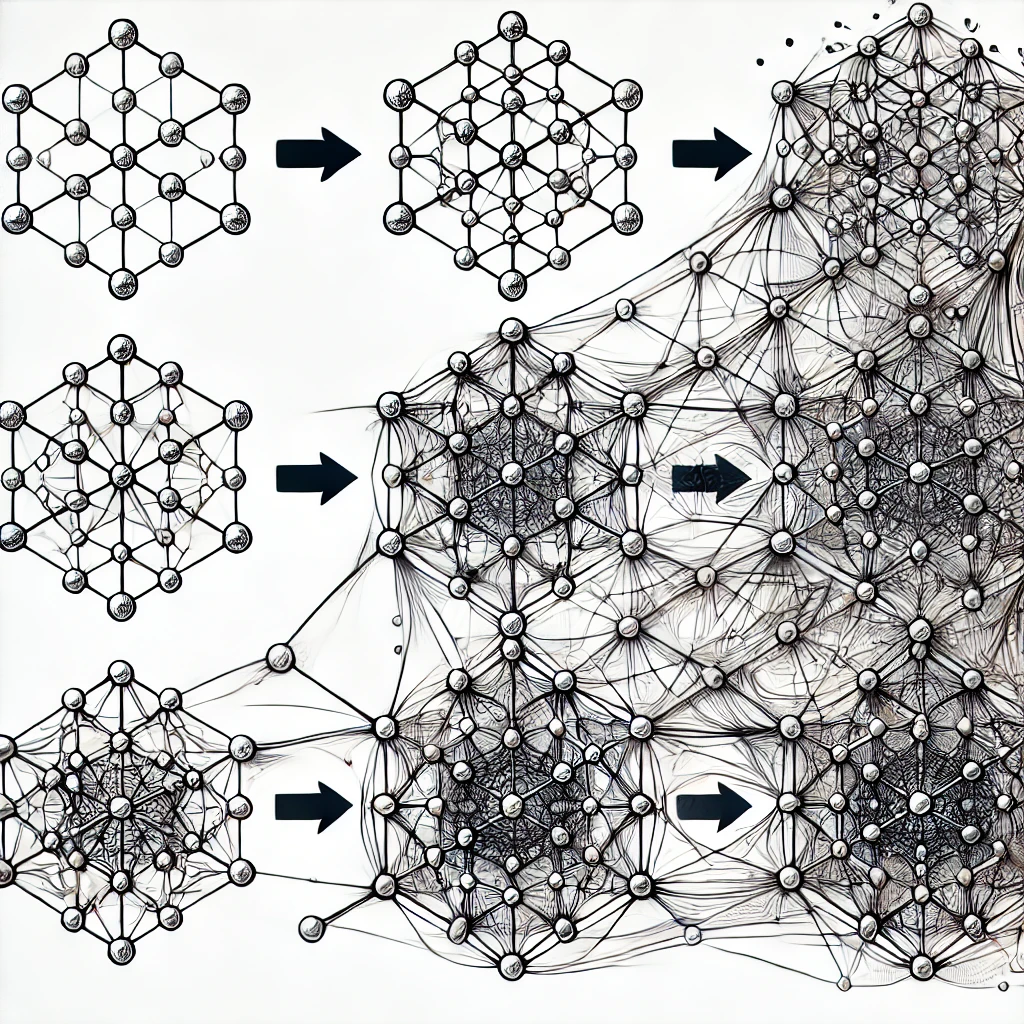
A detailed illustration showing the evolution of a hypergraph over time. The image starts with a simple geometric structure made of interconnected nodes and edges, which gradually becomes more complex, representing the emergence of physical phenomena like space and energy. The hypergraph evolves into intricate, web-like formations, with arrows indicating the computational rules driving this transformation.

A visual representation of quantum mechanics in Wolfram’s model, showing multiple possible paths a hypergraph can take as it evolves. Each path represents a different quantum state, and the superposition of these paths forms a complex structure, representing quantum phenomena. Arrows show the branching of quantum states as the hypergraph evolves.
Overunity Applications from Wolfram’s Model
Wolfram’s theory opens the door to several innovative ideas for overunity devices based on computational principles. Because space, time, and energy are emergent from discrete computations, devices could theoretically be designed to manipulate these underlying computational structures to extract energy from the system without relying on traditional energy sources.
1. Hypergraph Energy Extraction Device
Concept:
In Wolfram’s model, energy can be thought of as the computational work performed by the hypergraph as it evolves. By controlling the local rules of a hypergraph, it may be possible to alter the way energy flows through the system. A hypergraph energy extraction device would exploit the computational structure of space-time to produce excess energy by manipulating the fundamental rules that govern the evolution of the universe.
Mechanism:
- The device would involve a network of computational nodes designed to simulate a localized hypergraph structure. By adjusting the rules that govern the evolution of the hypergraph, the device could tap into the computational energy that emerges from the system’s evolution.
- Using high-speed computing, the device would monitor and manipulate the state of the hypergraph in real time, guiding its evolution to harness energy. Essentially, the device would “steer” the computational process to generate useful energy outputs.
Mathematical Framework:
The energy generated from this process could be modeled as a function of the hypergraph’s computational complexity:
$$[
E_{\text{out}} \sim C(G_t)
]$$
where $( C(G_t) )$ represents the computational complexity of the hypergraph at time $( t )$. By increasing the complexity of the system through computational manipulations, the device could increase the energy output.
Example:
Imagine a structure composed of interconnected nodes, where each node corresponds to a point in space-time. As the hypergraph evolves, the nodes shift positions and connections, representing the passage of time and changes in the local energy density. By carefully controlling these shifts, the system could produce energy similar to how traditional systems harness thermal or electrical gradients.
2. Cellular Automata-Based Overunity Device
Concept:
Cellular automata are simple rule-based systems that can produce complex behavior. In Wolfram’s computational universe, space and time are fundamentally cellular automata, with each “cell” representing a point in space. An overunity device based on cellular automata would involve creating a controlled system where the rules governing the cellular automata generate excess energy by organizing local interactions into a coherent, energy-producing system.
Mechanism:
- The cellular automata in this device would operate similarly to how a physical system extracts energy from gradients (e.g., heat engines extract energy from thermal gradients). By tuning the rules governing the automata, the system could create conditions that amplify certain interactions, leading to energy production.
- Cellular automata have been shown to produce a wide range of behaviors, from simple patterns to highly chaotic systems. By controlling the behavior of the automata, it is possible to create conditions that allow energy to be extracted from the underlying computational process.
Mathematical Framework:
The energy produced by the cellular automata could be modeled as a function of the system’s entropy $( S )$ and rule set $( R )$:
$$[
E_{\text{out}} = \int f(S, R) \, dt
]$$
where $( f(S, R) )$ represents the energy produced by the automata based on the current entropy state and rule set. By optimizing the rule set to create ordered patterns in the automata, the system could generate usable energy.
Example:
A device could consist of a grid of small computational units, each governed by a local rule set. As the system evolves, certain configurations of the automata generate energy by aligning the local states of the system, similar to how wind turbines align with air currents to generate electricity. By carefully designing the rule set, the system could maintain a continuous flow of energy.
3. Rule-Based Quantum Energy Device
Concept:
Quantum mechanics in Wolfram’s model is inherently probabilistic, as it emerges from the possible evolutions of the hypergraph. A device designed to manipulate these quantum computational rules could extract energy by favoring certain paths over others, effectively reducing quantum uncertainty in a way that produces usable energy.
Mechanism:
- The device would control the evolution of a quantum system by biasing the computational rules governing its evolution. By influencing the probabilities of different quantum states, the device could steer the system towards states that generate energy.
- This device could potentially operate at very small scales, utilizing quantum computational systems such as qubits. The key challenge would be in designing rules that allow the system to favor energy-generating paths without violating the principles of quantum mechanics.
Mathematical Framework:
The quantum energy device would rely on path integral mathematics, where the total energy output $( E_{\text{out}} )$ depends on the action $( S )$ along each quantum path:
$$[
E_{\text{out}} = \sum_{i} e^{iS_i}
]$$
By adjusting the rules governing the quantum
paths, the system could bias the evolution towards paths that generate higher energy outputs.
Example:
A device could operate by manipulating the evolution of a quantum computer, where the quantum states are carefully controlled to bias certain computational outcomes. As the system evolves, it would favor states that produce energy, effectively transforming quantum computational uncertainty into a usable energy source.
Mathematical Insights from Wolfram’s Computational Universe
- Hypergraph Dynamics:
Wolfram’s model treats the universe as a constantly evolving hypergraph, with space, time, and energy emerging from the relationships between nodes. By manipulating the structure and evolution of these hypergraphs, it is possible to control the flow of energy through the system. The hypergraph’s computational complexity $( C(G_t) )$ is key to understanding how energy can be extracted. - Cellular Automata and Entropy Control:
Cellular automata are simple models that can give rise to highly complex behaviors, including ordered structures that can be harnessed for energy. By controlling the entropy of a cellular automata system, it is possible to create a device that extracts energy from local computational interactions. This represents a novel approach to energy generation, leveraging computational processes rather than physical gradients. - Quantum Paths and Energy Production:
Wolfram’s rule-based approach to quantum mechanics offers a new way to think about energy generation at the quantum level. By biasing the evolution of quantum paths, it may be possible to create a device that produces energy from quantum uncertainty. This would require controlling the action along quantum paths, favoring those that lead to energy production.
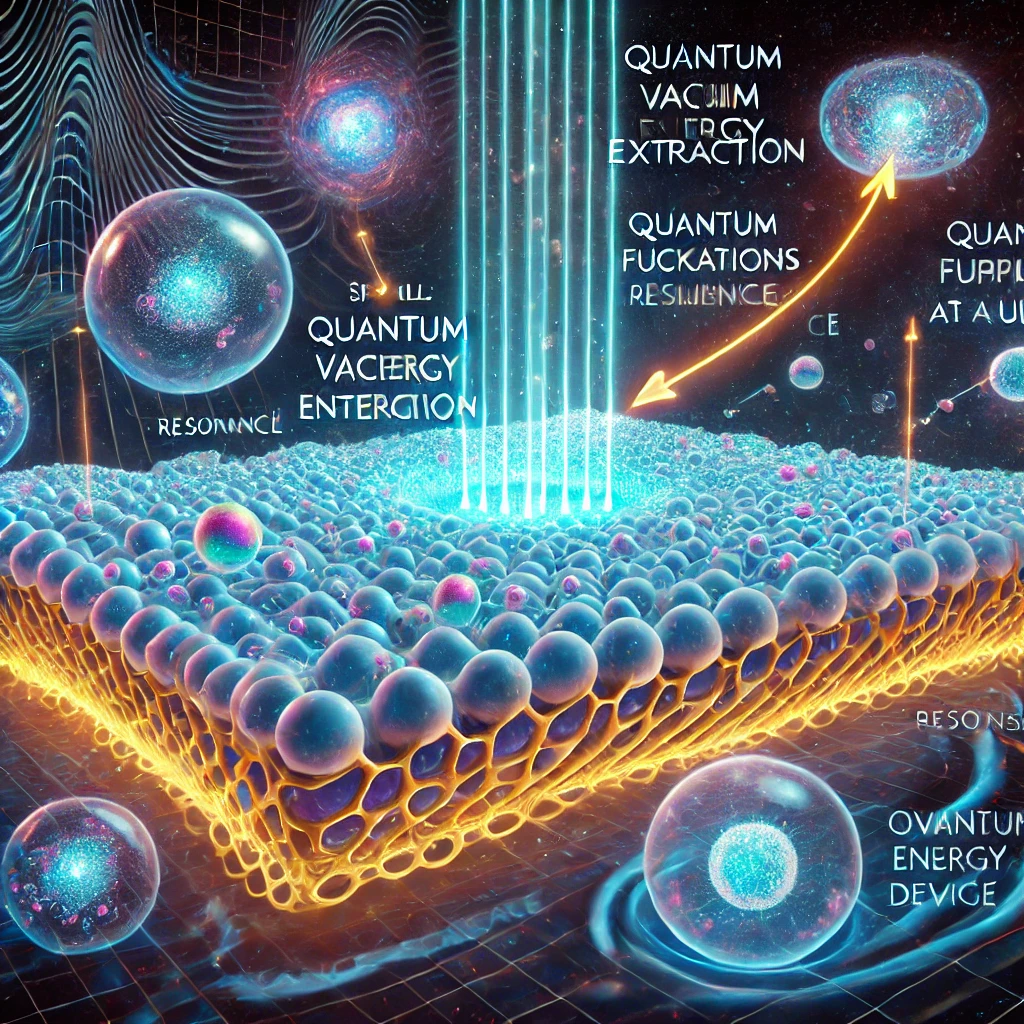
the conceptual diagram illustrating quantum vacuum energy extraction.
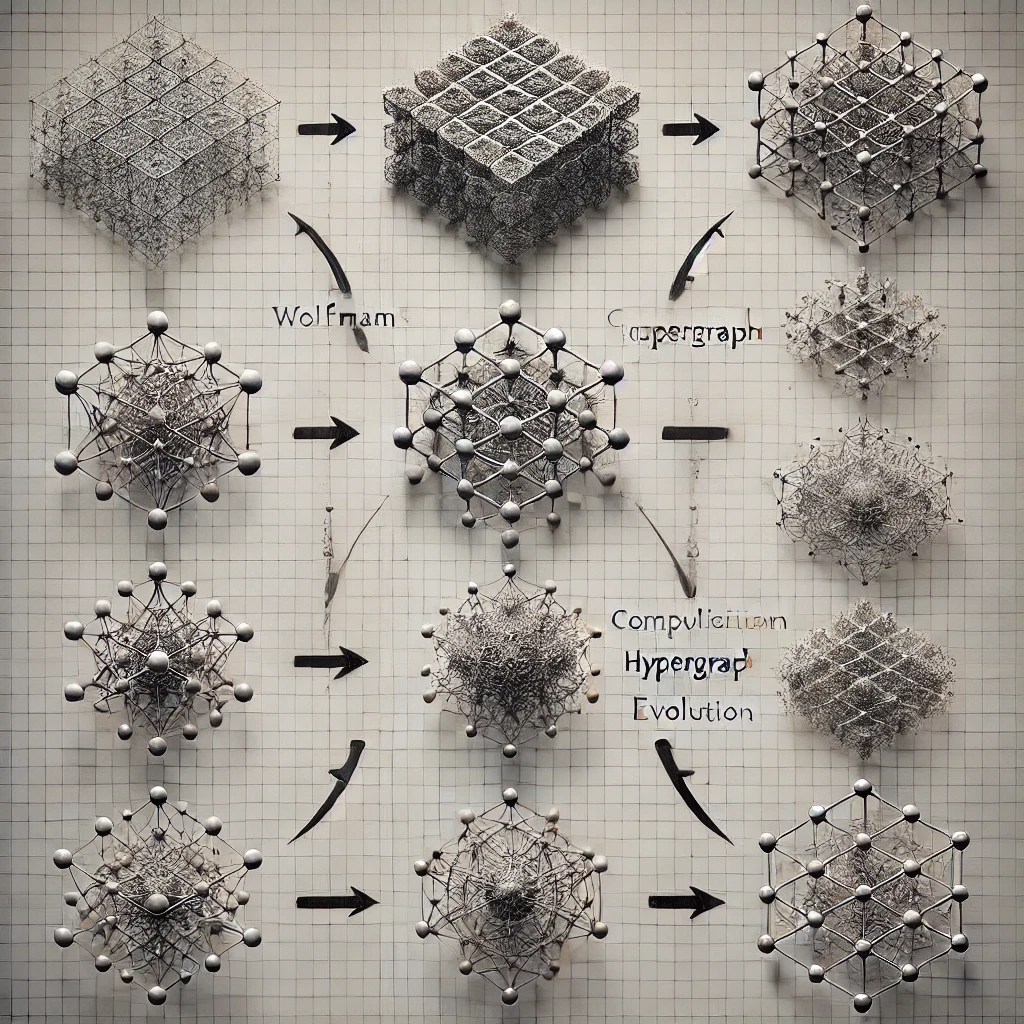
the conceptual diagram for Wolfram’s computational hypergraph evolution.
Linking to Related Resources
For further reading and exploration of Wolfram’s computational universe and its applications in physics and technology, consider the following resources:
- Wolfram Physics Project: The official site of Wolfram’s ongoing work on computational physics. Wolfram Physics Project
- A New Kind of Science: Stephen Wolfram’s seminal book that introduces the computational paradigm. A New Kind of Science
- Quantum Cellular Automata: An article on the potential of quantum cellular automata for future technologies. Quantum Cellular Automata
Conclusion
Stephen Wolfram’s computational universe presents a radical new way of understanding the fundamental workings of reality. His theory, which posits that space, time, and matter emerge from the evolution of hypergraphs, offers exciting possibilities for overunity devices. By manipulating the rules that govern these computational structures, it may be possible to design devices that extract energy from the fundamental computational processes of the universe. As we continue to explore unified theories, the potential for novel energy systems based on computational physics is vast.
In the next chapter, we will synthesize the ideas of Haramein, Russell, and Wolfram, comparing their approaches and exploring the philosophical and technological implications for future energy systems.
Chapter 4: Comparative Analysis of Haramein, Russell, and Wolfram’s Theories
Introduction to Unified Theories
In this chapter, we will synthesize the core principles of Nassim Haramein’s unified field theory, Walter Russell’s wave-based cosmology, and Stephen Wolfram’s computational universe. Although each theory presents a unique view of the universe, they share common goals: to describe the underlying mechanics of reality and explore how energy and matter emerge from these fundamental principles. By comparing and contrasting their ideas, we can identify potential technological applications—especially in the realm of overunity devices—and explore the philosophical implications of their unified theories.
Core Principles of Each Theory
1. Nassim Haramein’s Unified Field Theory
- Fundamental Concept: The universe is a fractal and holographic system where mass and energy emerge from quantum vacuum fluctuations. Haramein’s work emphasizes that mass, particularly the proton’s mass, is a product of vacuum energy, and the structure of spacetime itself generates the gravitational and nuclear forces through this interaction with the quantum vacuum.
- Key Formula:
$$[
\rho_{\text{vac}} = \frac{6 \hbar c}{\pi r_p^4}
]$$
This equation relates the vacuum energy density to the proton’s charge radius, suggesting that all matter emerges from quantum fluctuations.
2. Walter Russell’s Wave-Based Cosmology
- Fundamental Concept: The universe operates as a two-way oscillatory system, where energy flows through cycles of compression (gravitational forces) and expansion (radiative forces). Russell posits that all matter is light at rest, and the various forms of energy and matter in the universe are manifestations of the same waveforms.
- Key Formula:
$$[
E = \frac{hc}{\lambda}
]$$
Russell’s cosmology is based on the harmonic behavior of waveforms, where light and matter are continuous expressions of oscillatory cycles in the electromagnetic spectrum.
3. Stephen Wolfram’s Computational Universe
- Fundamental Concept: The universe is a vast computational system, where space, time, and matter emerge from the interactions of discrete elements governed by simple computational rules. In this framework, the evolution of a hypergraph—a network of points and their connections—gives rise to the structure of spacetime and the behavior of particles.
- Key Formula:
$$[
G_{t+1} = f(G_t)
]$$
This equation describes the evolution of a hypergraph, where simple rules iteratively create complex phenomena such as gravity and quantum mechanics.
Comparison of Key Themes
1. Approach to the Nature of Matter and Energy
- Haramein: Haramein views mass and energy as emergent properties of the quantum vacuum, where particles (especially protons) are essentially fractal resonators of spacetime curvature. His theory emphasizes the connection between the microscopic (Planck scale) and macroscopic (cosmic scale) structures.
- Russell: In contrast, Russell sees matter and energy as oscillatory cycles of light, where all matter is compressed light, and all energy is expanded light. He emphasizes the rhythmic nature of creation, positing that all energy is derived from the waveforms inherent in light itself.
- Wolfram: Wolfram offers a computational perspective, suggesting that the universe is fundamentally discrete, with matter and energy emerging from the step-by-step evolution of hypergraphs. Unlike Haramein and Russell, Wolfram’s model does not require a continuous spacetime or wave-based structure; instead, it relies on local computational rules that iteratively build up the universe’s complexity.
2. Emergence of Space-Time and Gravity
- Haramein: Gravity, in Haramein’s theory, emerges from the curvature of spacetime around protons, where protons are modeled as mini-black holes. This curvature is a direct result of quantum vacuum fluctuations interacting with matter.
- Russell: Russell’s concept of gravity is tied to the compression aspect of his wave theory. Gravity is the result of energy being pulled inward toward a center (centripetal force), while radiation, the opposite force, is the outward release of energy.
- Wolfram: Wolfram treats space and time as emergent properties of an evolving hypergraph. Gravity arises naturally from the way connections between points (nodes) in the hypergraph evolve. Denser regions of the hypergraph correspond to regions of spacetime curvature, giving rise to the effects we perceive as gravity.
3. Overunity Device Potential
- Haramein: Haramein’s theory suggests that overunity devices could harness energy from the quantum vacuum. By designing systems that tap into vacuum fluctuations—like his concept of the proton as a resonant cavity—devices could potentially extract energy from the fabric of spacetime itself.
- Russell: Russell’s wave-based model implies that overunity devices could be based on harmonic resonances of light. Devices that oscillate between compressive and radiative forces, mimicking the natural cycles of the universe, could potentially generate energy from the rhythmic patterns of waveforms.
- Wolfram: Wolfram’s computational universe suggests that energy could be extracted by manipulating the computational rules that govern hypergraph evolution. Devices that alter the local rules of space and time might harness computational work to generate excess energy. This would require understanding how to “steer” the computational evolution of the universe toward energy-producing configurations.

A side-by-side comparison illustration showing Haramein’s quantum vacuum energy and Russell’s wave-based cosmology. On one side, the quantum vacuum is depicted as fluctuating energy bubbles interacting with matter. On the other side, Russell’s wave theory shows compressive and radiative waveforms forming matter from light. Arrows indicate the flow of energy in both models, highlighting similarities and differences.

A conceptual diagram integrating Wolfram’s hypergraph model with Russell’s waveforms. The illustration shows how the evolving hypergraphs from Wolfram’s model could be interpreted as wave-based formations in Russell’s cosmology. The combination of geometric structures (hypergraphs) and waveforms demonstrates the potential synthesis of these theories. Arrows indicate how hypergraphs could map onto wave formations.
Philosophical Implications of Each Theory
1. Holofractal Universe and Unified Field
- Haramein’s theory emphasizes the interconnectedness of all things, from the smallest Planck-scale particles to the largest cosmic structures. His holofractal universe suggests that every part contains the whole, and that understanding the unified field could unlock the secrets of energy and matter creation on all scales.
2. Two-Way Motion and Wave-Based Creation
- Russell’s philosophy posits a universe that is inherently rhythmic and cyclical, with all creation following patterns of two-way motion. This wave-based approach aligns with many ancient philosophical and spiritual traditions, suggesting that the universe is a harmonious system of balanced forces.
3. Computational Irreducibility and the Limits of Knowledge
- Wolfram’s computational model introduces the concept of computational irreducibility, where the universe is too complex to be fully predicted or reduced to simple laws. This idea challenges traditional deterministic views of the universe and suggests that certain aspects of reality may be fundamentally unknowable.
Overunity Devices: Comparative Potential
Haramein’s Quantum Vacuum Resonator:
- Potential: Haramein’s theory opens the possibility of harnessing quantum vacuum fluctuations for energy generation. By creating systems that resonate with the quantum vacuum—similar to his concept of the Schwarzschild proton—devices could extract usable energy from spacetime itself.
- Challenges: Tapping into quantum vacuum energy would require overcoming significant technological barriers, particularly in maintaining resonance with vacuum fluctuations at the necessary scale.
Russell’s Harmonic Energy Device:
- Potential: Russell’s harmonic resonance theory suggests that devices could be designed to extract energy from the oscillatory nature of light and matter. By constructing systems that align with the natural rhythms of the universe, it may be possible to generate energy in harmony with cosmic forces.
- Challenges: The challenge lies in creating devices that can reliably oscillate between compression and expansion states, effectively mimicking the universal wave cycle.
Wolfram’s Hypergraph Energy Extractor:
- Potential: In Wolfram’s computational universe, overunity devices could theoretically manipulate the evolution of space-time to produce energy. By altering the local computational rules, energy could be extracted from the computational complexity of the universe itself.
- Challenges: Developing such devices would require a deep understanding of how to manipulate the local rules governing hypergraph evolution, which remains a theoretical challenge.
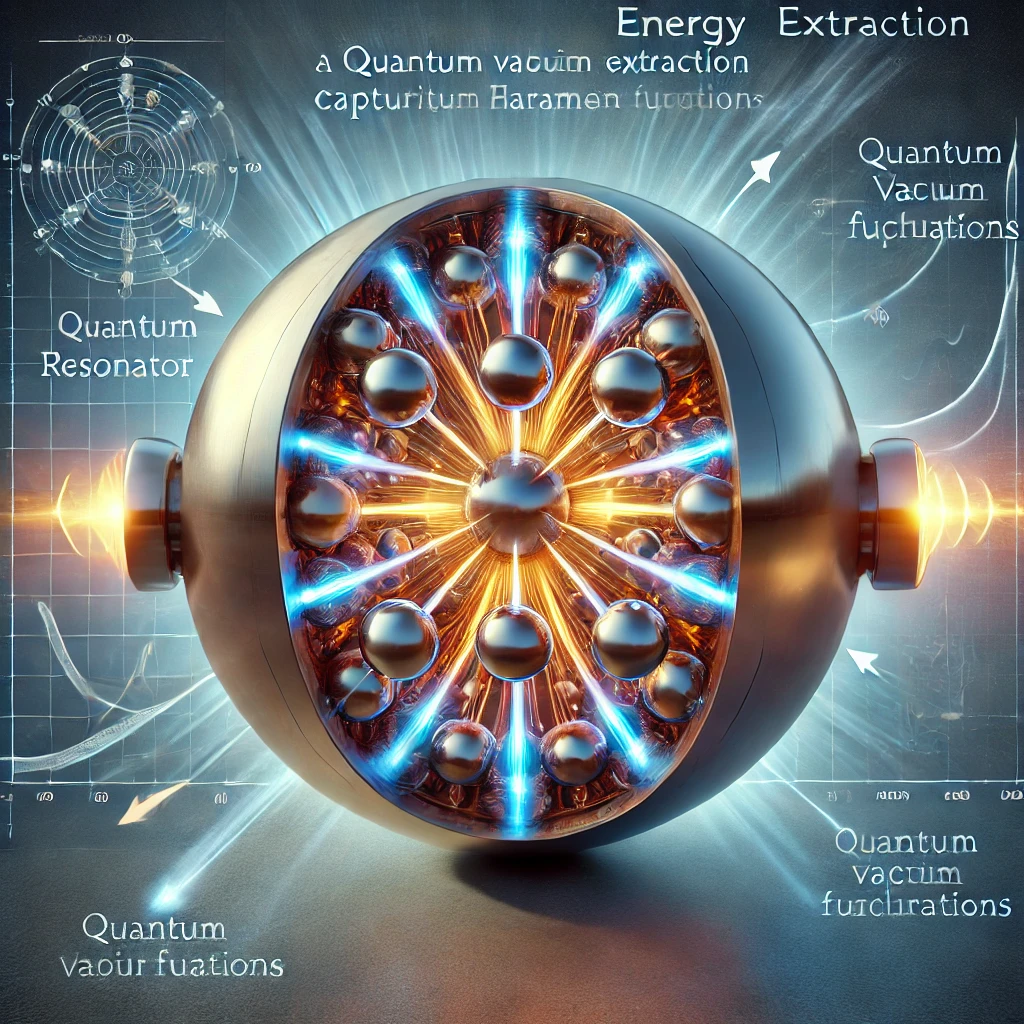
A diagram of a quantum vacuum resonator device designed for energy extraction, based on Haramein’s theory. The device is shown as a spherical resonator, capturing quantum vacuum fluctuations. Arrows indicate how energy is extracted from the vacuum and converted into electrical power through the system’s amplification mechanisms.
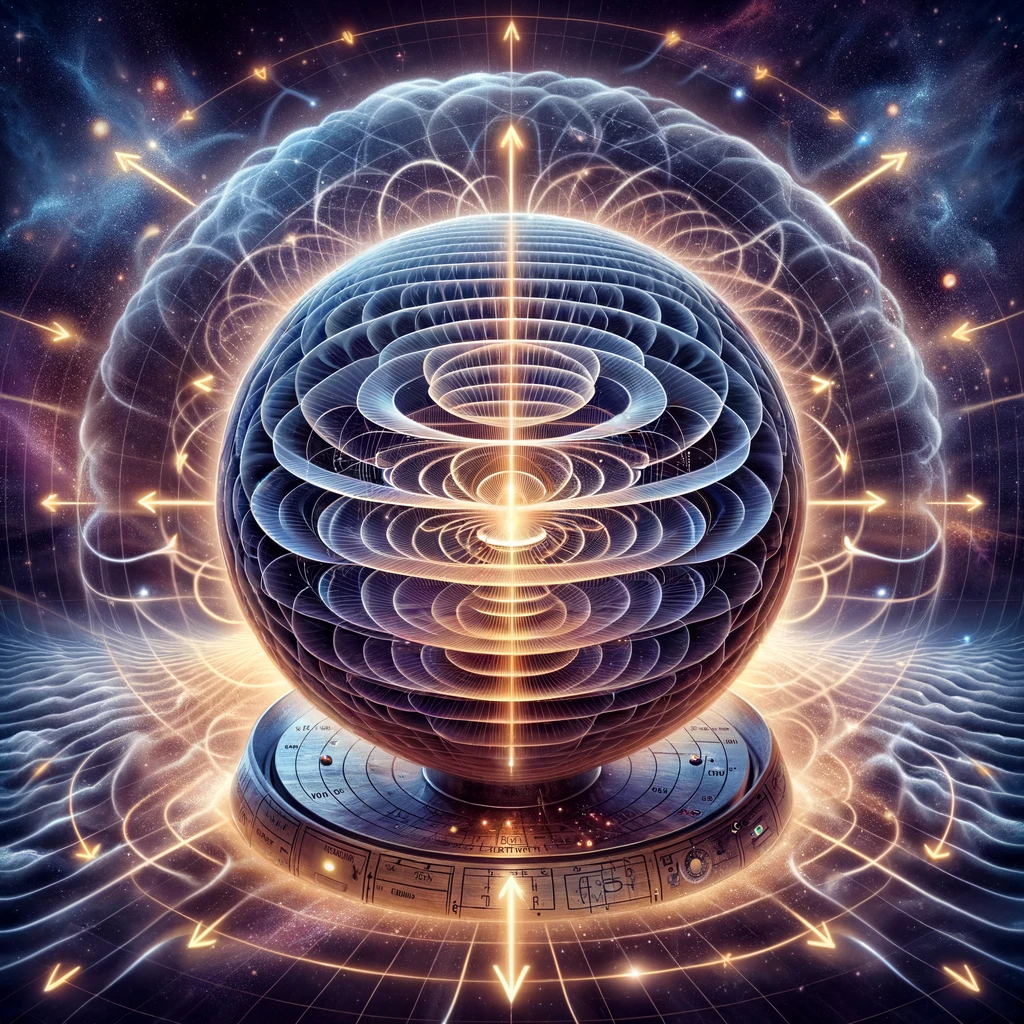
This illustration visually represents Russell’s Harmonic Energy Device, inspired by his harmonic resonance theory. The device is depicted as a spherical structure that oscillates between compression and expansion states, aligning with the natural rhythms of the universe. Surrounding the device are wave-like patterns, symbolizing the oscillatory nature of light and matter. Cosmic forces and light waves radiate outward from the device, demonstrating the flow of energy in harmony with the universe’s natural wave cycles. Arrows are used to illustrate the dynamic transition between states of compression and expansion, highlighting the potential for extracting energy through these oscillations.
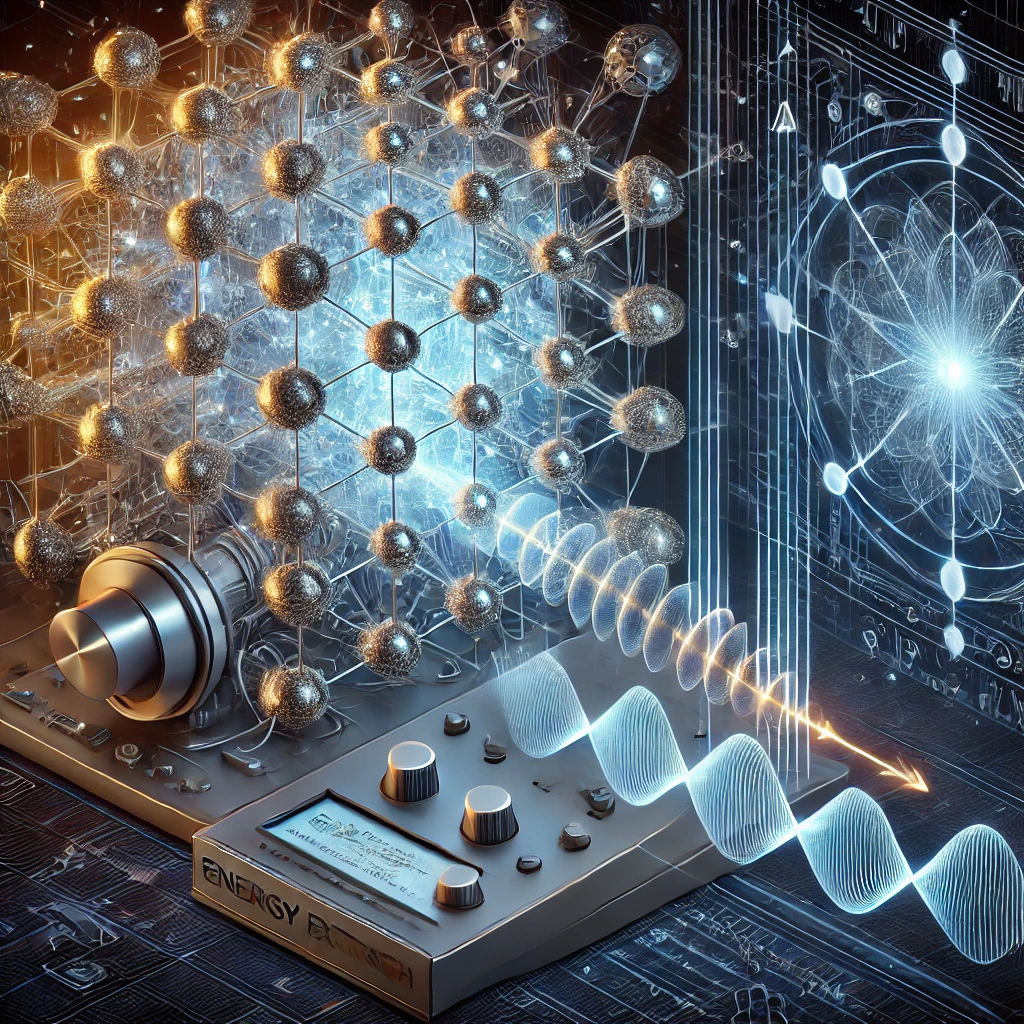
This illustration showcases Wolfram’s Hypergraph Energy Extractor, designed to manipulate the computational structure of the universe. The device is depicted interacting with a hypergraph a network of interconnected nodes and edges that evolves over time. Surrounding the hypergraph are complex geometric patterns representing the fabric of space-time. Energy flows are visualized as glowing lines extracted from the computational complexity of the evolving hypergraph. Arrows and waveforms demonstrate how the local computational rules are manipulated, providing a theoretical means of energy extraction from the universe’s intrinsic computational processes.
A Unified View: Exploring Cross-Theory Integration
By analyzing the similarities and differences between these theories, we can begin to explore whether there are pathways to integrating their ideas into a single framework. Some potential cross-theory synergies include:
- Resonance and Waveforms:
- Both Haramein and Russell emphasize the importance of resonance in their theories, suggesting that matter and energy are intimately tied to oscillatory patterns. Combining Russell’s harmonic wave theory with Haramein’s quantum vacuum resonance ideas could lead to novel approaches for overunity devices that harness both light and quantum fluctuations.
- Discrete and Continuous:
- While Haramein and Russell focus on continuous models (waveforms and spacetime curvature), Wolfram’s computational model introduces the idea of a discrete universe. Integrating these approaches may involve exploring how continuous waveforms emerge from discrete computational rules, potentially leading to new insights into the nature of energy extraction.
- Hypergraph and Fractal Structures:
- Haramein’s fractal universe and Wolfram’s hypergraph structures both describe self-similar systems that evolve over time. Investigating the relationship between fractals and hypergraphs could provide new insights into how space, time, and energy emerge from fundamental principles.
Conclusion
Haramein, Russell, and Wolfram offer radically different but potentially complementary visions of the universe. Haramein’s holofractal universe connects the micro and macro through quantum vacuum energy, Russell’s wave-based cosmology emphasizes rhythmic cycles of light and matter, and Wolfram’s computational universe describes reality as a complex evolving hypergraph. While each theory stands on its own, exploring the intersections between them may provide the key to developing new technologies, particularly overunity devices that can harness the fundamental forces of the universe.
In the next chapter, we will delve into practical designs for overunity devices, synthesizing insights from all three theorists to propose new technological applications.
Chapter 5: Overunity Devices Based on Unified Field Theories
Introduction to Overunity Concepts
Overunity devices, often referred to as systems that produce more energy than they consume, are typically considered impossible under the standard laws of thermodynamics, which hold that energy cannot be created or destroyed, only transformed. However, the unified field theories of Nassim Haramein, Walter Russell, and Stephen Wolfram offer alternative ways to understand the nature of energy, matter, and the universe itself. These alternative frameworks provide a fresh perspective on how overunity might be achievable through advanced manipulation of natural forces, quantum fields, and computational rules.
In this chapter, we will explore potential designs for overunity devices based on each theorist’s framework. We will also explore how combining insights from Haramein, Russell, and Wolfram could lead to even more robust designs for energy systems that draw power from the fundamental structure of the universe.
1. Overunity Devices Based on Nassim Haramein’s Quantum Vacuum Theory
Quantum Vacuum Energy Extraction Device
Overview:
Nassim Haramein’s unified field theory suggests that the quantum vacuum contains vast amounts of energy that can be tapped into. The quantum vacuum, or zero-point energy, is a seething sea of fluctuating energy fields, even in the absence of matter. Haramein’s work proposes that vacuum fluctuations are the source of mass and gravity, and that through resonant interactions with this field, energy can be extracted.
Design Concept:
The Quantum Vacuum Energy Extractor would be a resonant system designed to capture energy from the vacuum fluctuations. Inspired by Haramein’s Schwarzschild proton model, the device would involve creating a spherical resonator capable of interacting with vacuum fluctuations at the Planck scale.
Key Components:
- Spherical Resonator: A highly conductive spherical chamber that resonates with quantum vacuum fluctuations. The resonator would be designed to match the natural frequency of vacuum fluctuations, amplifying these fluctuations and converting them into usable energy.
- Quantum Field Amplifiers: Devices embedded in the resonator that can amplify the interaction between the quantum vacuum and the material inside the resonator. These amplifiers could operate using advanced nanotechnology to enhance energy extraction from the vacuum field.
- Energy Conversion Unit: A system that captures the amplified vacuum energy and converts it into electrical energy. This could involve a photonic system where amplified photons (resulting from vacuum energy interactions) are harvested and transformed into an electrical current.
Mathematical Framework:
The energy extracted from the vacuum field could be estimated using Haramein’s vacuum energy density formula:
$$[
E_{\text{vac}} = \frac{6 \hbar c}{\pi r_p^4}
]$$
where:
- $( E_{\text{vac}} )$ is the vacuum energy density,
- $( \hbar )$ is the reduced Planck constant,
- $( c )$ is the speed of light,
- $( r_p )$ is the proton’s charge radius. By scaling up this system, we could model the total energy output as a function of the interaction between the resonator’s surface area and the quantum vacuum field.
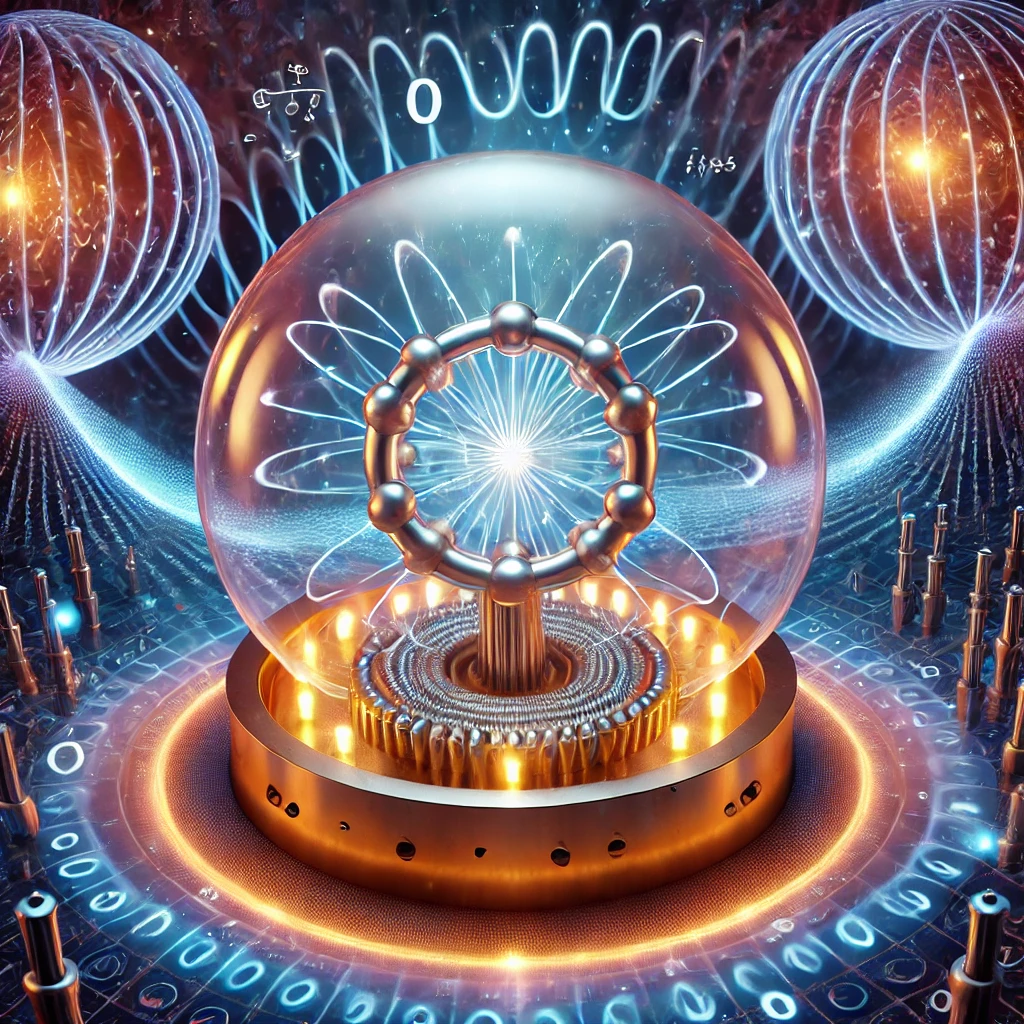
This illustration represents a Quantum Vacuum Energy Extraction Device inspired by Nassim Haramein’s unified field theory. At the center of the design is a spherical resonator that interacts with quantum vacuum fluctuations. Surrounding the resonator are quantum field amplifiers, glowing with energy as they enhance the interaction between the quantum vacuum and the resonator. The background features fluctuating quantum fields depicted as wave-like patterns, symbolizing the seething sea of zero-point energy. Arrows illustrate the flow of energy from the vacuum into the resonator, where it is amplified and directed into an energy conversion unit. This system transforms the amplified energy into usable electrical power, showcasing the potential of extracting energy from the vacuum field.
Proton-Based Overunity Generator
Overview:
Haramein’s model of the proton as a Schwarzschild-like object suggests that energy can be harnessed from the curvature of spacetime around particles. A device inspired by this concept could extract energy from the spacetime curvature generated by the quantum vacuum interaction with protons or proton-like objects.
Design Concept:
The Proton-Based Overunity Generator would be a device that mimics the proton’s interaction with the quantum vacuum. The system would involve a core material with proton-like properties, designed to interact with vacuum fluctuations and extract energy from spacetime curvature.
Key Components:
- Proton Resonator Core: A core material engineered to mimic the charge radius and properties of a proton. This core would act as a resonant cavity for quantum vacuum energy, designed to capture and amplify the energy surrounding the proton-like object.
- Energy Capture System: Surrounding the core would be an energy capture system that collects the energy generated from the spacetime curvature around the proton resonator. This system would convert the energy into electrical power, possibly through advanced superconducting materials.
Mathematical Framework:
The energy output from the proton-based system could be calculated using Haramein’s proton energy formula:
$$[
E_p = 4 \frac{\hbar c}{r_p}
]$$
where $( r_p )$ is the proton radius. The design would aim to maximize the surface area of the proton-like core to increase the interaction with the vacuum field and therefore the energy output.
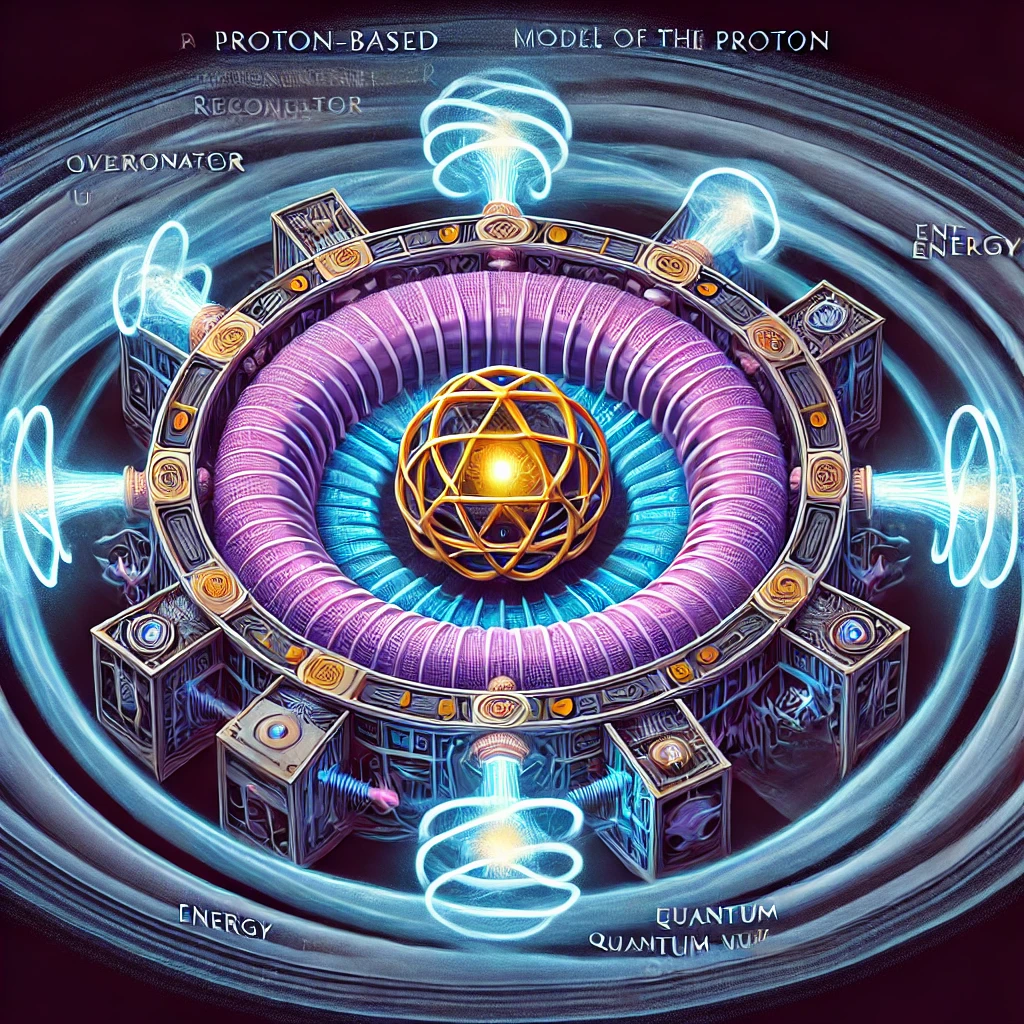
This illustration depicts a Proton-Based Overunity Generator inspired by Nassim Haramein’s proton model. At the center is the Proton Resonator Core, designed to mimic the charge radius and properties of a proton, which interacts with quantum vacuum fluctuations. Surrounding the core are swirling fields representing spacetime curvature, generated by the quantum vacuum’s interaction with the proton-like object. Radiating outward from the core are glowing energy waves, symbolizing the amplification of energy. Surrounding the core is the Energy Capture System, depicted with arrows leading to an energy conversion unit. This unit transforms the captured energy from spacetime curvature into electrical power, highlighting the potential of extracting overunity energy from the quantum properties of protons.
2. Overunity Devices Based on Walter Russell’s Wave Principle
Harmonic Resonance Overunity Device
Overview:
Walter Russell’s cosmology is built on the idea that the universe operates through rhythmic cycles of compression and expansion, which are the basis of all energy and matter. His two-way motion theory—where matter is created through centripetal force (compression) and radiated outward through centrifugal force (expansion)—suggests that energy can be harvested from these natural cycles.
Design Concept:
The Harmonic Resonance Overunity Device would utilize resonant systems to capture energy from the oscillatory nature of light and matter. By tuning the system to specific harmonic frequencies, the device could amplify the natural oscillations in the environment and convert them into usable energy.
Key Components:
- Oscillatory Core: The core of the device would be a material that resonates at harmonic frequencies, mimicking the compression and expansion cycles that Russell describes. The core would operate in harmony with the natural resonant frequencies of the universe.
- Wave Amplification System: This system would amplify the oscillations within the core, creating a feedback loop that increases the amplitude of the waves, allowing for energy extraction from the oscillatory cycles.
- Energy Conversion Unit: A system that converts the amplified oscillations into electrical energy, possibly through a piezoelectric or photonic energy harvesting mechanism.
Mathematical Framework:
Russell’s harmonic resonance principle suggests that energy can be amplified in a system based on its natural frequency ( f_n ):
$$[
E_{\text{out}} = \frac{1}{2} A^2 f_n^2
]$$
where:
- $( A )$ is the amplitude of the oscillation,
- $( f_n )$ is the resonant frequency. By tuning the device to resonate with the natural oscillations of the universe, significant energy amplification could be achieved.
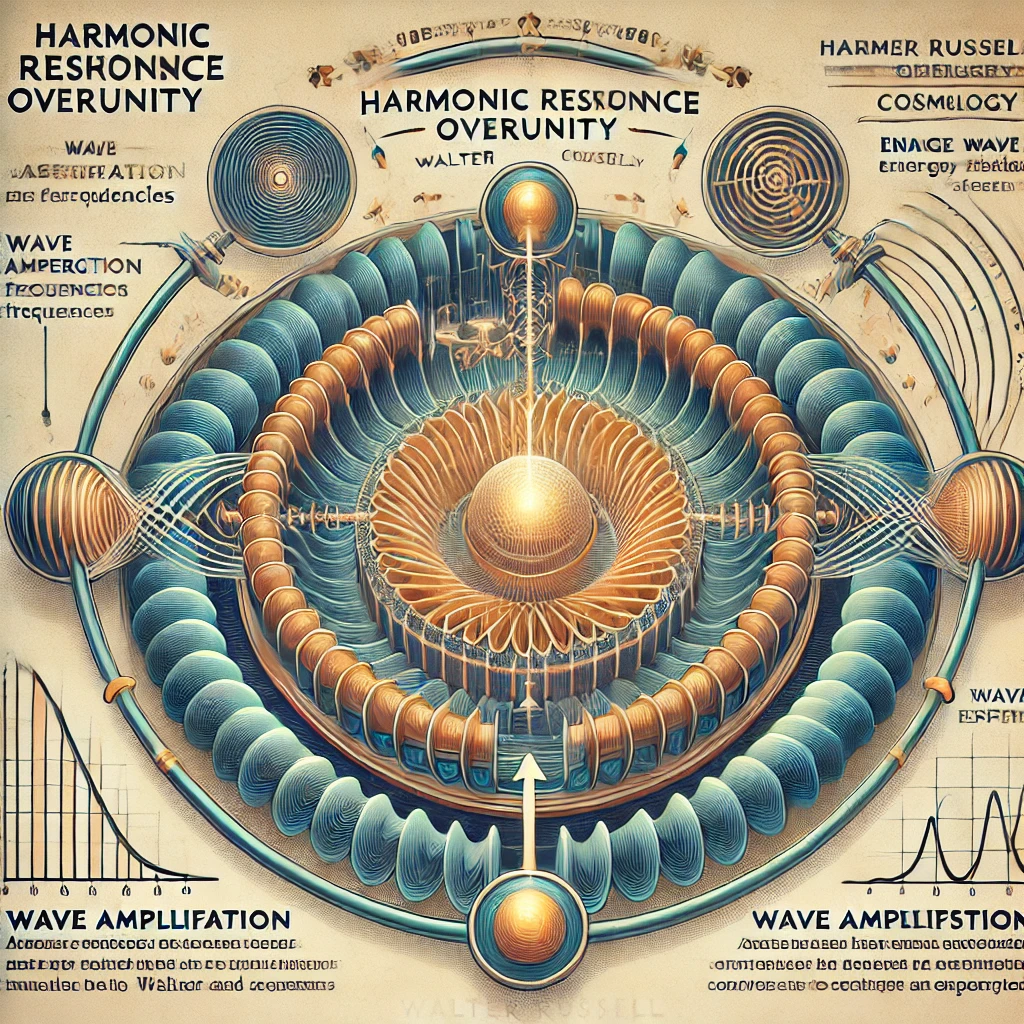
This illustration visualizes the Harmonic Resonance Overunity Device, inspired by Walter Russell’s cosmology. At the center of the device is the Oscillatory Core, designed to resonate with harmonic frequencies that mimic the universe’s natural cycles of compression and expansion. Surrounding the core are wave-like energy patterns, symbolizing the rhythmic oscillations described by Russell. The Wave Amplification System enhances these natural oscillations, depicted as amplified waves radiating outward from the core. Arrows represent the flow of energy, guiding it toward the Energy Conversion Unit, which converts the amplified harmonic waves into usable electrical energy, demonstrating the potential of extracting power from the universe’s oscillatory nature.
Centripetal-Centrifugal Balance Device
Overview:
Another concept derived from Russell’s work is the balance between centripetal (compressive) and centrifugal (radiative) forces. An overunity device could be designed to harness the energy generated by this balance, capturing the dynamic equilibrium between these opposing forces.
Design Concept:
The Centripetal-Centrifugal Balance Device would oscillate between states of compression and expansion, mimicking the natural cycles described by Russell. This oscillation could be controlled to create a continuous flow of energy, leveraging the rhythmic patterns of matter creation and dissolution.
Key Components:
- Compression Chamber: A chamber where energy is focused inward through centripetal compression, storing potential energy in a compact state.
- Radiative Expansion System: A counterpart system that allows the stored energy to radiate outward, releasing the compressed energy in a controlled manner.
- Energy Harvesting Unit: A system that captures the released energy and converts it into electrical power. This could involve using advanced energy storage materials that can quickly transition between compressed and radiative states.
Mathematical Framework:
The power output from this device could be modeled as a function of the balance between centripetal and centrifugal forces:
$$[
P_{\text{out}} = k \cdot (F_c – F_r)
]$$
where:
- $( F_c )$ is the centripetal force (compression),
- $( F_r )$ is the centrifugal force (radiation),
- $( k )$ is a proportionality constant representing the efficiency of energy conversion. By carefully balancing these forces, the device could generate a continuous output of energy.
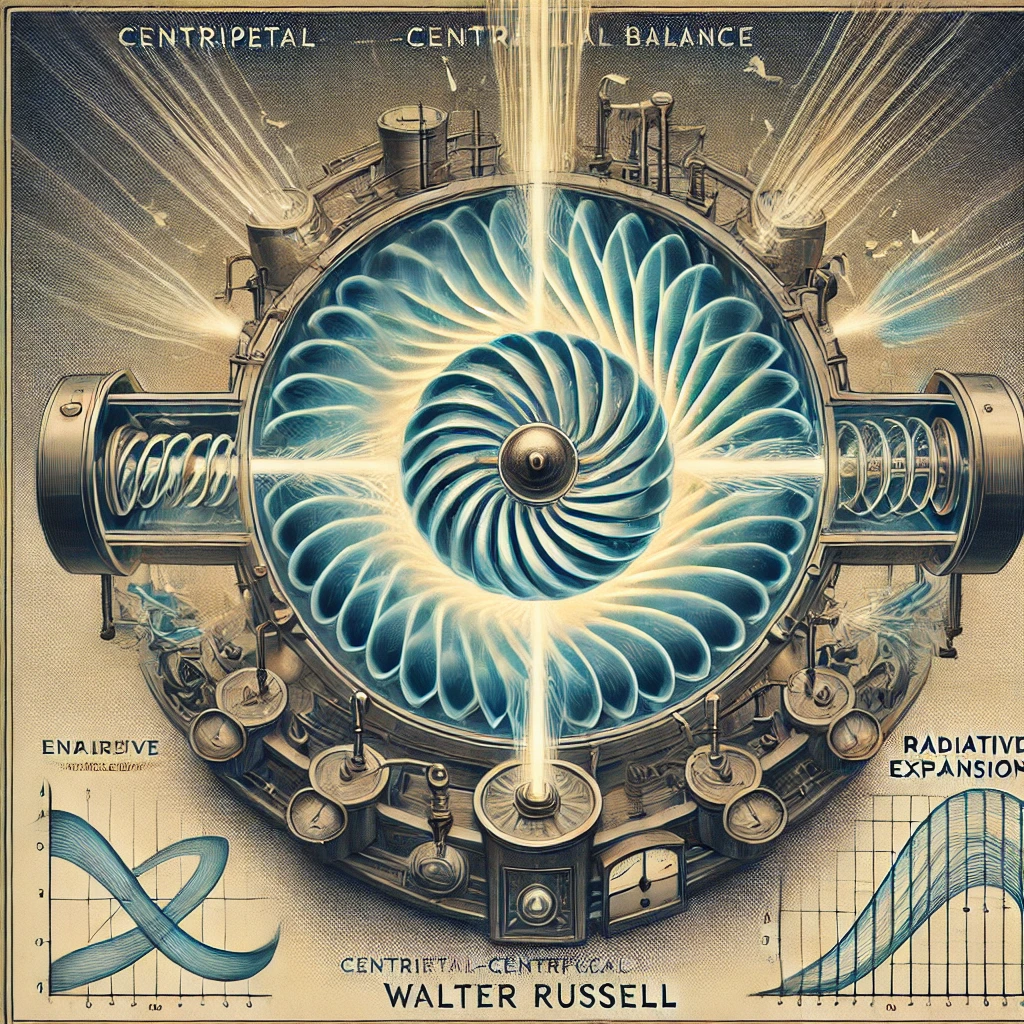
This illustration depicts the Centripetal-Centrifugal Balance Device, designed based on Walter Russell’s theories of opposing forces. At the center is the Compression Chamber, where energy is focused inward through centripetal compression, storing potential energy. Surrounding this is the Radiative Expansion System, which allows the compressed energy to radiate outward in a controlled manner, releasing stored energy. The background features wave-like patterns, symbolizing the rhythmic balance between compression and expansion. Arrows demonstrate the flow of energy between these two states, leading to the Energy Harvesting Unit, which converts the balanced forces into usable electrical energy.
3. Overunity Devices Based on Stephen Wolfram’s Computational Universe
Hypergraph Energy Extraction Device
Overview:
In Wolfram’s computational universe, energy could be thought of as the computational work performed by the hypergraph as it evolves. By controlling the local rules of a hypergraph, a device might be able to alter the flow of energy through the system and extract it for use.
Design Concept:
The Hypergraph Energy Extraction Device would manipulate the evolution of a localized hypergraph to extract computational energy. The device would involve a network of computational nodes that simulate a hypergraph’s structure, and by altering the rules governing the evolution of this hypergraph, energy could be harvested.
Key Components:
- Computational Core: A system that simulates the evolution of a hypergraph, with each node representing a point in space and each edge representing a connection between them.
- Rule Manipulation Unit: A system that adjusts the computational rules that govern the evolution of the hypergraph, creating conditions that favor energy extraction.
- Energy Conversion System: A unit that captures the energy generated from the hypergraph’s evolution and converts it into electrical power.
Mathematical Framework:
The energy output could be modeled as a function of the
computational complexity ( C(G_t) ) of the evolving hypergraph:
$$[
E_{\text{out}} \sim C(G_t)
]$$
where $( G_t )$ is the hypergraph at time $( t )$, and $( C(G_t) )$ represents the complexity of the system. By increasing the computational complexity of the hypergraph, the device could increase its energy output.
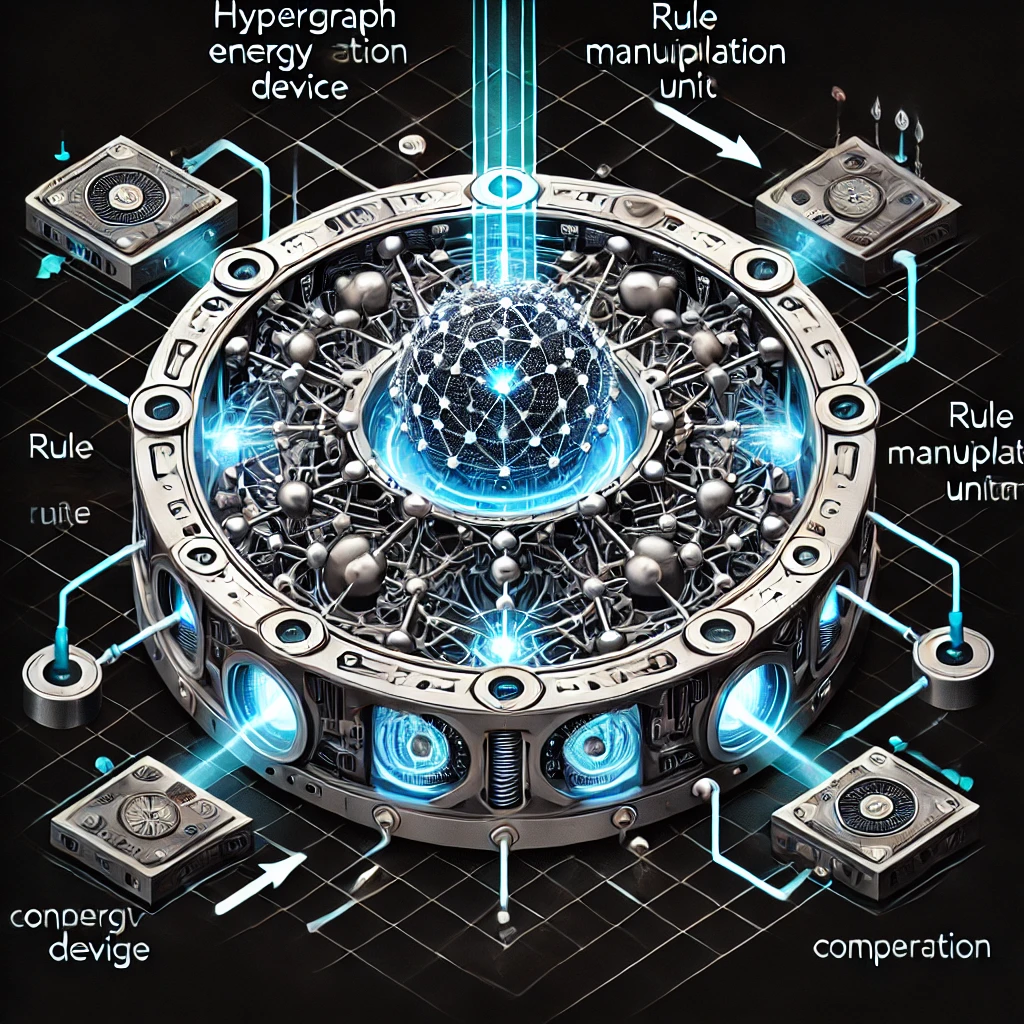
This illustration depicts the Hypergraph Energy Extraction Device, inspired by Wolfram’s computational universe theory. At the center is the Computational Core, consisting of interconnected nodes and edges that represent a hypergraph’s evolving structure. Surrounding the core is the Rule Manipulation Unit, which adjusts the computational rules to alter the hypergraph’s evolution, creating conditions for energy extraction. Energy flows from the hypergraph to the Energy Conversion System, where it is transformed into usable electrical power. Arrows illustrate the flow of energy and computational manipulation, highlighting the process of extracting energy from the hypergraph’s computational complexity.
Conclusion
Each unified field theory Haramein’s quantum vacuum, Russell’s wave-based cosmology, and Wolfram’s computational universe offers unique insights into the potential for overunity energy generation. Devices based on these theories could revolutionize the way we think about energy, tapping into the fundamental forces of the universe to create systems that generate more energy than they consume. By synthesizing ideas from these diverse theoretical frameworks, we can push the boundaries of what is possible and pave the way for future technologies that harness the hidden energies of the universe.
In the next chapter, we will explore the experimental and practical implications of building these devices, focusing on the current state of research and the challenges that must be overcome to make these concepts a reality.
Chapter 6: Experimental and Practical Implications for Building Overunity Devices
Introduction
The journey from theoretical overunity concepts to practical energy-generating devices involves bridging the gap between speculative physics and experimental science. Although the theories of Nassim Haramein, Walter Russell, and Stephen Wolfram offer exciting potential for revolutionary energy systems, realizing overunity devices in the real world comes with significant scientific, engineering, and practical challenges. This chapter will discuss these challenges, propose experimental frameworks for validating the theories, and outline the key technological developments needed to bring overunity devices closer to reality.
Current Experimental Status of Overunity Research
Over the past century, there have been numerous claims of overunity devices—ranging from perpetual motion machines to zero-point energy devices—many of which have not withstood scientific scrutiny. Despite this, breakthroughs in quantum physics, materials science, and computational technologies suggest that it may be possible to achieve forms of energy generation that at least push the boundaries of traditional energy conservation laws.
Challenges in Experimental Validation
- Thermodynamics and Energy Conservation:
- One of the primary challenges in demonstrating an overunity device is the established laws of thermodynamics, particularly the first and second laws. These laws dictate that energy cannot be created or destroyed and that systems naturally evolve toward entropy. A key experimental challenge is designing systems that appear to produce more energy than they consume while staying within the boundaries of these laws, or understanding how these laws might be modified under specific conditions, such as in quantum-scale systems.
- Measurement Sensitivity and Accuracy:
- Overunity claims often hinge on extremely small energy differences that can be difficult to measure with high precision. Modern experimental setups would require ultra-sensitive measurement devices, such as quantum-level calorimeters and electromagnetic sensors, to detect and quantify potential overunity effects.
- Reproducibility:
- Any overunity device must be reproducible under controlled laboratory conditions. Reproducibility is a hallmark of scientific validation, and one of the key issues with previous overunity claims is the inability to consistently reproduce results across different experiments or research teams.
Experimental Framework for Haramein’s Quantum Vacuum-Based Devices
Testing Quantum Vacuum Resonance
Hypothesis:
According to Haramein’s theory, the quantum vacuum contains vast amounts of untapped energy, and resonating systems—such as the Quantum Vacuum Energy Extractor proposed in Chapter 5—could harness this energy through interactions with vacuum fluctuations.
Experimental Setup:
- Resonant Cavity: Construct a spherical resonator made from superconducting materials to minimize energy losses. The cavity must be designed to resonate at frequencies corresponding to the quantum vacuum’s natural oscillation modes, which are theorized to occur at the Planck scale.
- Energy Capture Mechanism: Use advanced photonic detectors to measure the energy output from the resonator. This could involve a system of photodiodes or quantum sensors designed to detect small changes in electromagnetic fields or photon emissions resulting from vacuum fluctuations.
- Control and Variables: The experiment should be controlled by varying the resonant frequency of the cavity and comparing energy outputs under different conditions, ensuring that no external energy sources (e.g., thermal or electromagnetic radiation) are contributing to the energy measurements.
Expected Outcome:
If Haramein’s theory holds, the resonator should exhibit measurable energy outputs in the form of electromagnetic radiation or photon emissions that exceed the input energy required to sustain the resonant system.
Testing Proton-Based Overunity Generator
Hypothesis:
Haramein’s Schwarzschild proton model suggests that protons interact with the quantum vacuum to generate energy from spacetime curvature. By creating proton-like resonators, it may be possible to reproduce this effect on a larger scale.
Experimental Setup:
- Proton Resonator: Develop a material that simulates the proton’s charge radius and mass density. This could be a nanoparticle engineered with specific electromagnetic properties to interact with the quantum vacuum. Superconducting materials or specially engineered graphene sheets could be candidates for this core.
- Vacuum Chamber: Place the resonator inside a vacuum chamber to minimize external interference. The chamber should also be electromagnetically shielded to prevent stray radiation from affecting the results.
- Energy Monitoring: Use high-precision calorimeters and electromagnetic field sensors to detect any anomalous energy production from the proton-like resonator.
Expected Outcome:
If the proton-like resonator interacts with the quantum vacuum in the manner described by Haramein, energy outputs should exceed the energy required to maintain the resonance of the system, indicating overunity behavior.
Experimental Framework for Russell’s Harmonic Wave-Based Devices
Harmonic Resonance Overunity Device Testing
Hypothesis:
Walter Russell’s theory of harmonic resonance posits that energy can be extracted from the rhythmic cycles of light and matter. By designing a device that resonates with the natural harmonic frequencies of the universe, overunity energy could be harvested.
Experimental Setup:
- Oscillatory System: Construct a device that uses piezoelectric materials capable of converting mechanical vibrations into electrical energy. The system would be designed to oscillate at specific harmonic frequencies (such as those found in the Earth’s Schumann resonances or cosmic microwave background radiation).
- Resonance Amplification: The device would amplify oscillations through a feedback loop, where the energy generated by the piezoelectric materials is fed back into the system to maintain the oscillation.
- Energy Monitoring: Energy output would be measured against input to determine whether the system generates more energy than it consumes.
Expected Outcome:
If Russell’s harmonic resonance theory is correct, the device should be able to sustain oscillations and generate excess energy beyond what is required to maintain the system.
Centripetal-Centrifugal Balance Device Testing
Hypothesis:
Russell’s concept of balancing centripetal (inward) and centrifugal (outward) forces suggests that a device could tap into this equilibrium to generate energy. The system would alternate between compressive and radiative states, mimicking the natural cycles of matter creation and dissolution.
Experimental Setup:
- Dual-Action System: Design a system that alternates between compression (centripetal) and radiation (centrifugal) phases, possibly using hydraulic systems for compression and electromagnetic fields for radiation. The system would harness the energy released during the transition between these states.
- Energy Capture: Use energy storage devices (e.g., capacitors or batteries) to capture the energy released during the transition phases. Sensors would track the energy flow during each cycle to determine whether energy is conserved or whether the system produces excess energy.
Expected Outcome:
The system should ideally demonstrate that more energy can be extracted during the transition between compressive and radiative states than is required to drive the compression process, indicating overunity performance.
Experimental Framework for Wolfram’s Computational Hypergraph Devices
Testing Hypergraph Energy Extraction
Hypothesis:
Wolfram’s computational universe model suggests that energy is an emergent property of the evolution of hypergraphs. By manipulating the rules that govern a hypergraph’s evolution, it might be possible to extract energy from this process.
Experimental Setup:
- Computational Simulation: Use high-performance computing systems to simulate the evolution of a hypergraph over time. The simulation would involve nodes and edges evolving according to simple, local computational rules, as described in Wolfram’s theory.
- Energy Measurement: The system would track computational complexity and energy use. As the hypergraph evolves, the experiment would monitor whether energy consumption decreases relative to the increase in computational complexity, implying an excess of energy emerging from the system.
- Physical Prototype: A physical device might involve a network of quantum processors or computational units designed to mimic hypergraph evolution. The device could use feedback loops to alter the computational rules in real time, optimizing the system for energy extraction.
Expected Outcome:
If Wolfram’s theory holds, the evolution of the hypergraph should lead to a detectable energy surplus, suggesting that energy can be extracted from the fundamental computational structure of the universe.
Testing Cellular Automata-Based Energy Generation
Hypothesis:
Cellular automata, as simple rule-based systems, can produce highly complex and ordered behavior. Wolfram’s theory suggests that by controlling the evolution of cellular automata, energy could be harnessed from computational transformations.
Experimental Setup:
- Automata Simulation: Run simulations of cellular automata systems that evolve under controlled rule sets. Track how the automata’s complexity evolves over time and whether energy can be extracted during phase transitions between ordered and chaotic states.
- Physical Implementation: Build a physical system composed of microprocessors that mimic cellular automata evolution. The system would attempt to generate energy by controlling the transitions between states.
Expected Outcome:
The system could potentially generate energy during transitions between ordered and chaotic states, similar to how certain physical systems release energy during phase transitions (e.g., water freezing into ice).
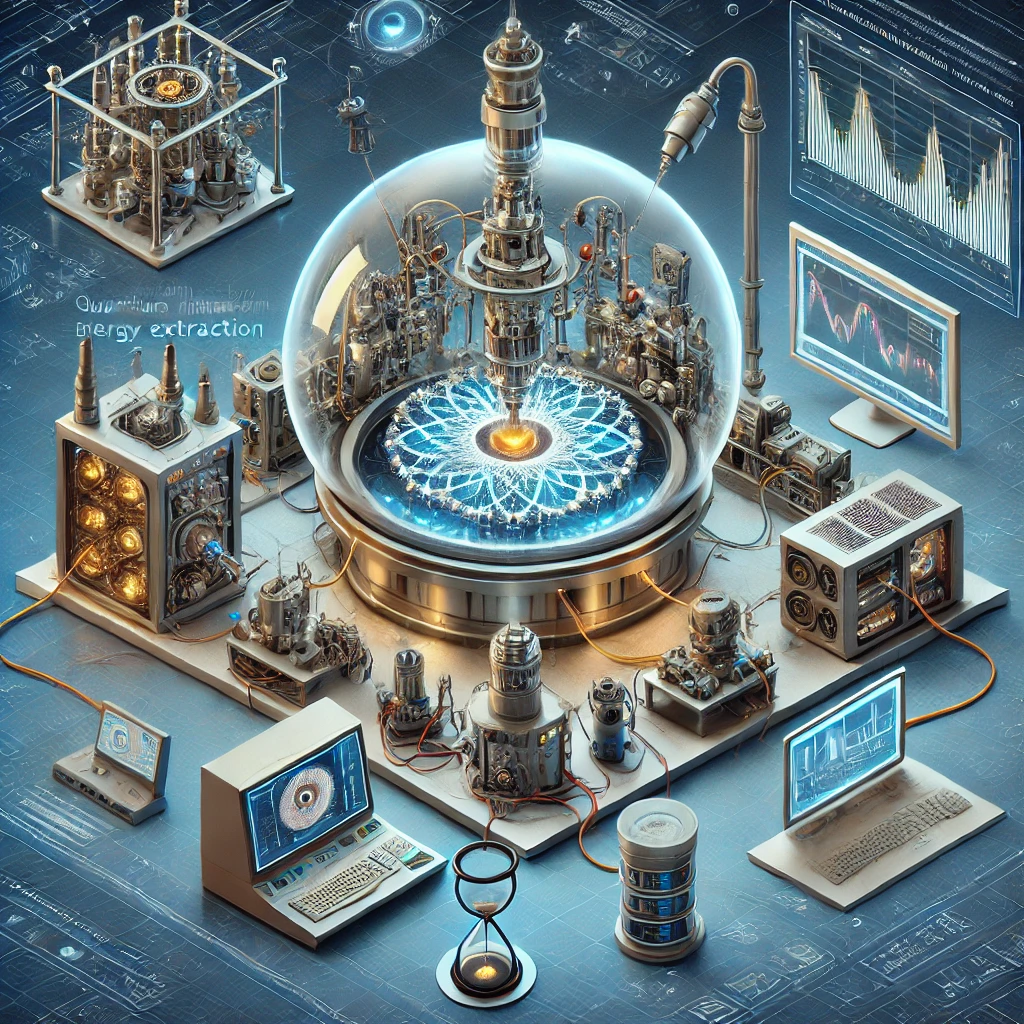
This detailed illustration depicts an experimental laboratory setup for testing quantum vacuum energy extraction devices. At the center is a spherical vacuum chamber, connected to various monitoring instruments and energy capture systems. Inside the chamber, quantum vacuum fluctuations are being measured by sensors. The collected data is shown being fed into computers for analysis, while the lab is equipped with technical displays and instruments that monitor the experiment in real time.
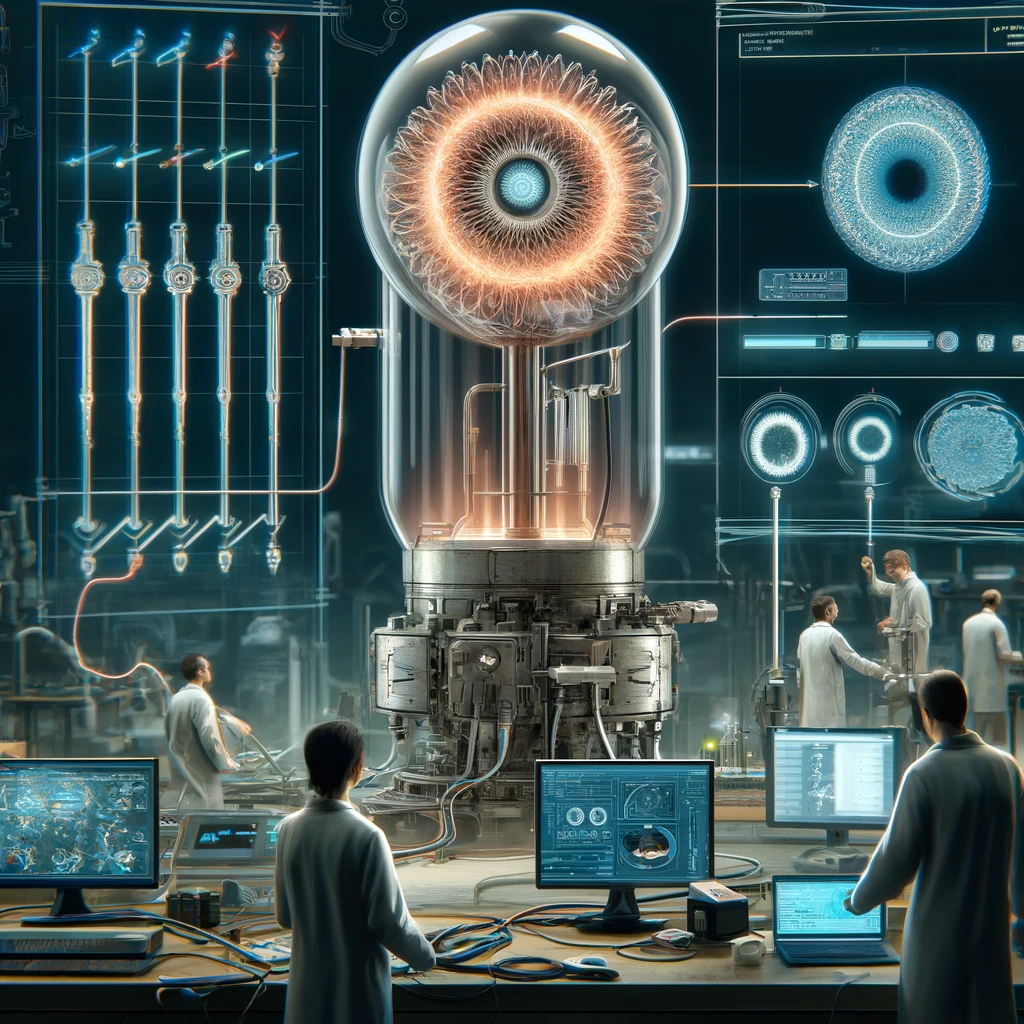
This illustration shows scientists testing a prototype overunity device in a research lab. The device is connected to various diagnostic equipment, with its energy output displayed on monitors. Arrows indicate the energy flow within the device, and scientists are seen adjusting controls and measuring its performance. The lab is filled with technical instruments and wires, illustrating the detailed monitoring and evaluation of the device’s energy performance.
Technological Developments Required
To bridge the gap between theory and practical application, several technological advancements are necessary:
- Advanced Materials:
- Superconducting materials and graphene-based structures may be critical in minimizing energy losses and enhancing the efficiency of resonators and energy extraction systems. Nanotechnology could play a crucial role in designing materials that interact optimally with quantum fields.
- High-Precision Measurement Tools:
- Ultra-sensitive instruments are needed to measure tiny energy outputs and fluctuations. Quantum sensors, high-precision calorimeters, and advanced electromagnetic field detectors will be essential for verifying any potential overunity effects.
- Quantum Computing and Simulation:
- Wolfram’s computational universe relies heavily on the simulation of hypergraph evolution
. Quantum computers could simulate these systems in ways that classical computers cannot, potentially revealing new insights into the energy dynamics of evolving hypergraphs.
- Artificial Intelligence and Machine Learning:
- AI and machine learning algorithms could be used to optimize the experimental setups, fine-tuning the parameters of each system in real-time to maximize energy extraction.
Conclusion
While the realization of overunity devices remains speculative, the unified field theories of Haramein, Russell, and Wolfram offer intriguing possibilities for future energy systems. Experimentation based on these frameworks will be essential in testing the limits of current physical laws and pushing the boundaries of what is scientifically and technologically possible. The journey from theory to practical application will undoubtedly require significant advances in materials science, computational power, and measurement precision. However, the potential benefits—clean, limitless energy—make the pursuit of overunity technologies a bold and exciting frontier for future research.
In the next chapter, we will discuss the implications of these overunity technologies for society, the environment, and the future of science and industry.
To provide a comprehensive understanding of the real-world development of overunity devices, we can explore current attempts to create practical overunity energy systems by referencing three key projects: Terragen, InfinitySAV, and Magmov Energy. These projects claim to have developed or are developing energy technologies that can generate more output energy than is input, aligning with the concept of overunity that was discussed in the earlier theoretical chapters.
1. Terragen: Resonance Technology for Clean Energy
Website: Terragen
Overview of Terragen Technology
Terragen claims to be working on clean energy solutions based on principles of resonance and harmonic interactions, aligning with ideas reminiscent of Walter Russell’s wave-based cosmology. Their system is reportedly designed to capture natural resonant frequencies from the environment and amplify these frequencies to generate energy.
Device Concept: Resonant Harmonic Generator
Technology Overview:
- Terragen’s device operates by harnessing resonant frequencies from natural sources, such as the Earth’s geomagnetic field or ambient electromagnetic waves. Similar to how Russell envisioned energy extraction from the rhythmic compression and expansion of light and matter, the Terragen technology captures and amplifies these natural resonances to produce usable electrical energy.
- The key to their approach is creating a system that naturally resonates with these environmental frequencies, using advanced materials to amplify and convert the resonant energy into a continuous output of electrical power.
Working Principles:
- Resonant Amplification: Terragen’s system uses principles of resonance amplification, where small amounts of energy are collected from ambient sources (e.g., the Earth’s magnetic field) and then amplified through constructive interference.
- Energy Conversion: Once the resonance is amplified, the system converts the harmonic energy into direct electrical power. This process may involve the use of piezoelectric or electromagnetic converters.
Potential Applications:
- Off-Grid Power Solutions: The Terragen device could be used to provide decentralized energy to remote areas where traditional power grids are not accessible.
- Industrial Applications: Factories and production lines could integrate Terragen technology to reduce energy costs by supplementing their power needs with clean, resonant energy.
Challenges:
- Verification of the overunity claims by independent researchers is necessary to validate the effectiveness and scalability of the device. Additionally, the sustainability of the amplified resonances and how long they can maintain their energy production over time needs further testing.
Relevance to Russell’s Theory:
Terragen’s approach is closely aligned with Walter Russell’s concepts of wave resonance and energy amplification. By tapping into the rhythmic cycles of the natural world, they aim to create a system where energy flows in balance, using harmonic resonances for sustained energy production.

illustration for the Terragen Resonant Harmonic Generator based on the description.
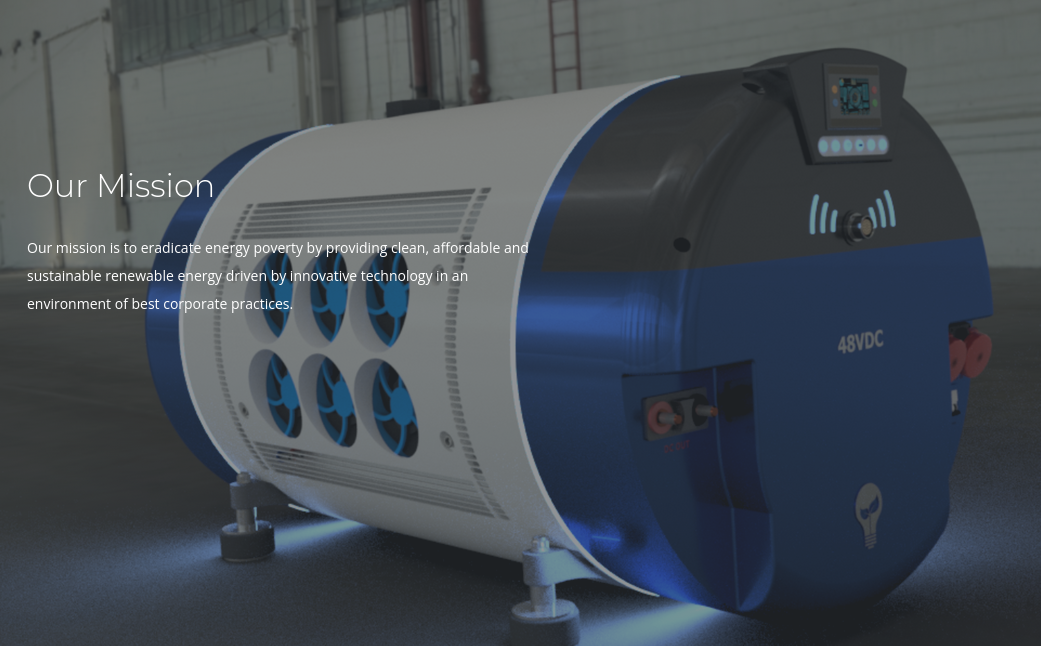
Actual Version of the Generator
2. InfinitySAV: Magnetic Motor Generator
Website: InfinitySAV
Overview of InfinitySAV Technology
InfinitySAV focuses on the development of a magnetic motor generator, a device that reportedly operates through magnetic interactions to produce electricity without the need for fuel or external input once it is initiated. This system aligns with the ideas of extracting energy from magnetism and could be linked to the theories of both Nassim Haramein and Stephen Wolfram.
Device Concept: Magnetic Motor Generator
Technology Overview:
- InfinitySAV’s device operates on the principle of magnetic coupling, where carefully arranged magnetic fields in a rotating motor generate continuous motion without requiring constant external energy input. Once the motor is set in motion, it sustains itself through magnetic interactions, providing a continuous output of electrical energy.
- The motor uses a combination of permanent magnets and electromagnetic coils to create a system of self-sustaining rotation. As the magnetic fields interact, they push the motor’s rotor, generating electrical power in the process.
Working Principles:
- Magnetic Induction: The magnetic motor relies on the principles of induction, where the movement of the rotor induces an electrical current in the surrounding coils. Once initiated, the magnetic fields maintain the rotor’s motion with minimal friction or energy loss.
- Overunity Claims: InfinitySAV claims that the motor can generate more electrical energy than it consumes to keep the rotor moving, suggesting an overunity effect where the output energy exceeds the input needed to maintain the system.
Potential Applications:
- Residential Energy Systems: The magnetic motor could be used in homes to provide off-grid power, drastically reducing or even eliminating the need for external electricity from the grid.
- Sustainable Industrial Power: Factories and other industrial facilities could integrate the magnetic motor generator into their operations, lowering operational costs and reducing reliance on fossil fuels.
Challenges:
- Independent Testing: Like other overunity devices, the magnetic motor has faced skepticism. Independent verification through rigorous testing and replication by third-party researchers is necessary to establish its validity and scalability.
- Durability: While the concept of magnetic induction is well understood, ensuring the device’s components maintain their integrity and efficiency over long periods of operation remains a challenge.
Relevance to Haramein’s and Wolfram’s Theories:
- Haramein’s focus on the interaction of quantum vacuum energy with matter could be related to the magnetic motor’s interaction with magnetic fields, suggesting that unseen forces (such as vacuum fluctuations) could play a role in the motor’s sustained motion.
- Wolfram’s computational universe could provide a theoretical basis for the structured interactions between magnetic fields and their resulting energy production, aligning with Wolfram’s idea that discrete, rule-based systems can lead to emergent energy-generating phenomena.
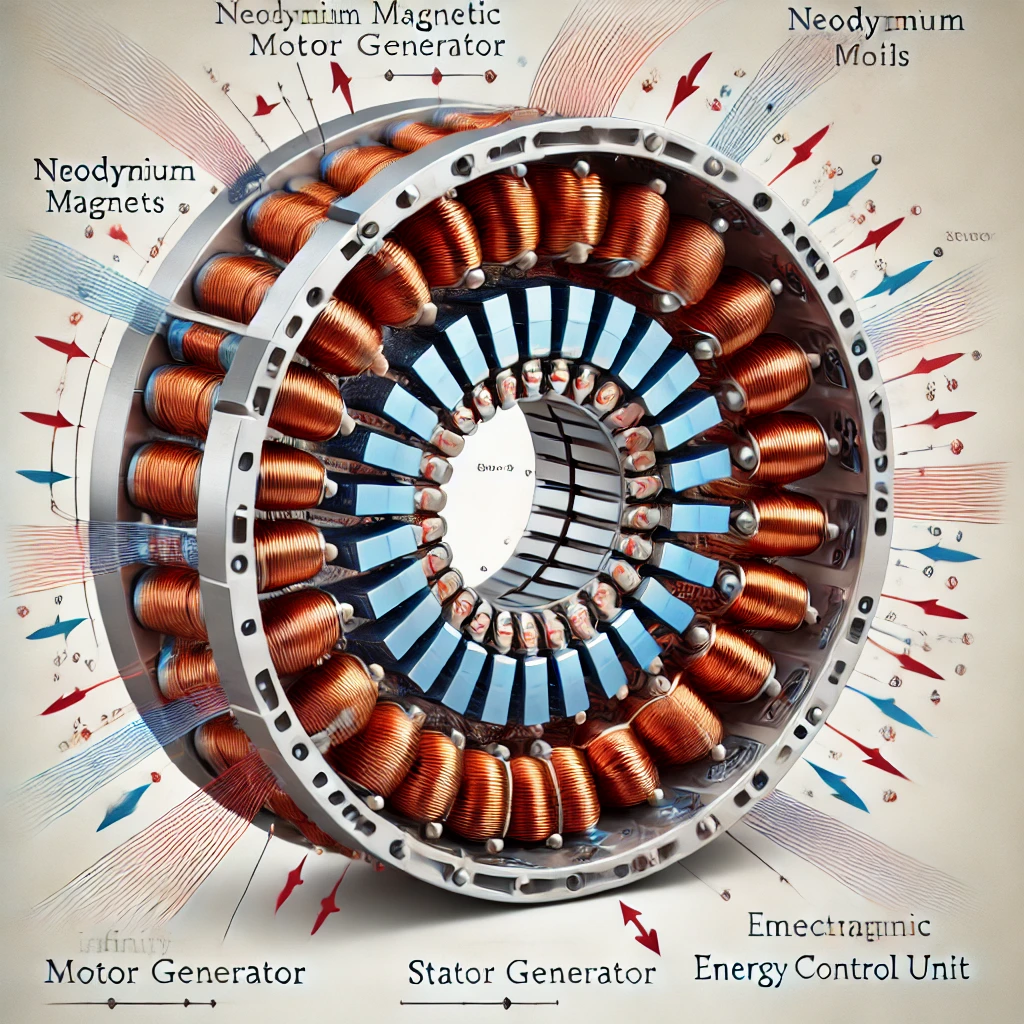
Illustration for INFINITY SAW
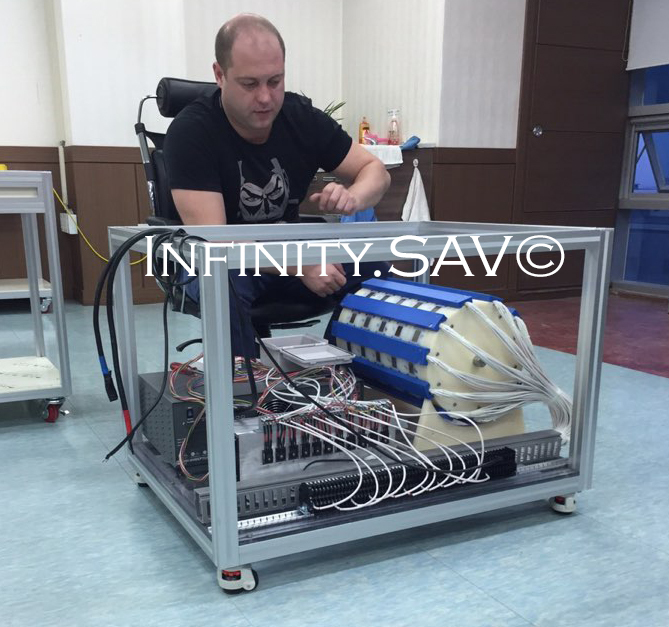
Actual Version of the Generator
3. Magmov Energy: Magnetic Overunity Device
Website: Magmov Energy
Overview of Magmov Technology
Magmov Energy is another company focused on magnetic-based overunity devices. Their Magmov Generator reportedly operates on a magnetic principle that allows it to generate more energy than it consumes. Like InfinitySAV, Magmov’s technology centers around magnetic fields and their interactions, but with a unique approach that claims even greater efficiency and scalability.
Device Concept: Magmov Generator
Technology Overview:
- Magmov’s device is designed to harness the continuous interaction between permanent magnets and electromagnetic fields. The key to their system is the use of advanced materials and precision engineering to reduce friction and energy losses to nearly zero, enabling the device to operate indefinitely without the need for external energy input.
- Similar to InfinitySAV, the Magmov Generator uses the principle of magnetic induction to create a self-sustaining electrical current, but with improvements in the configuration of the magnetic fields to enhance energy output.
Working Principles:
- Magnetic Field Rotation: The Magmov Generator relies on the precise alignment of magnetic fields to create a self-sustaining rotational motion. Once the device is set in motion, the interaction of the magnetic fields keeps the rotor spinning, generating electricity without external energy sources.
- Energy Amplification: Magmov claims that their device amplifies the energy generated by the rotating magnetic fields, resulting in an overunity effect where the output energy is greater than the initial energy required to start the system.
Potential Applications:
- Commercial and Industrial Use: The Magmov Generator could be deployed in commercial settings to provide large-scale, off-grid energy solutions for factories, warehouses, and data centers.
- Portable Power Systems: A scaled-down version of the Magmov Generator could provide portable, self-sustaining power for remote locations, military bases, or disaster relief operations.
Challenges:
- Replication and Verification: Like other magnetic overunity devices, the Magmov Generator must undergo rigorous testing by independent scientists to verify its claims. Until these devices are widely tested and replicated, skepticism will remain.
- Energy Storage and Scaling: While the generator claims to provide continuous energy, the question of efficiently storing this energy and scaling it to meet larger industrial or national power needs is a challenge that will need to be addressed.
Relevance to Wolfram’s and Haramein’s Theories:
- Wolfram’s idea of computational structures generating emergent phenomena could relate to how the Magmov system uses precise arrangements of magnetic fields to create sustained motion. The structured interactions of magnetic forces in the generator could be seen as a computational system that generates continuous energy through a series of rule-based interactions.
- Haramein’s theory about the energy present in spacetime curvature could provide insight into how magnetic fields interact with the quantum vacuum to sustain the generator’s motion, suggesting that the device may be tapping into unseen forces in the quantum field.
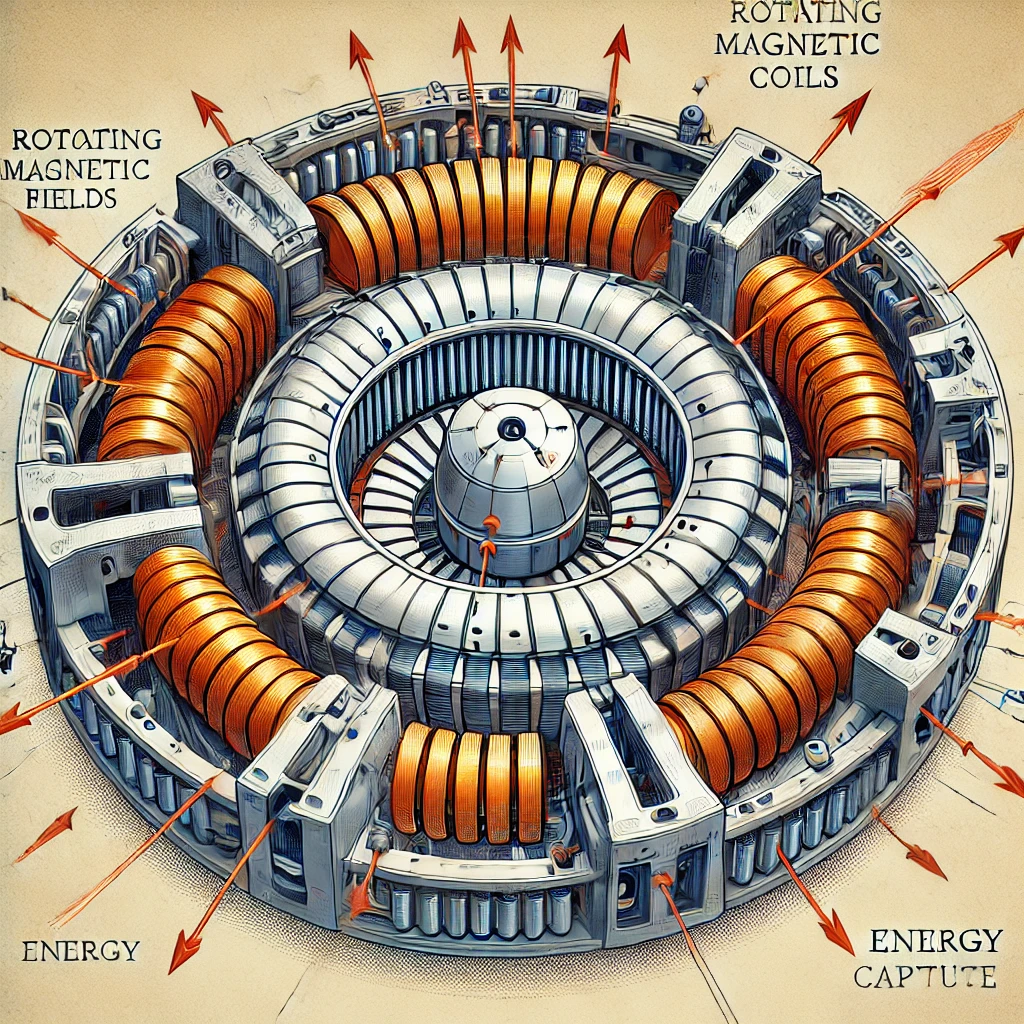
illustration for the Magmov Energy Magnetic Generator
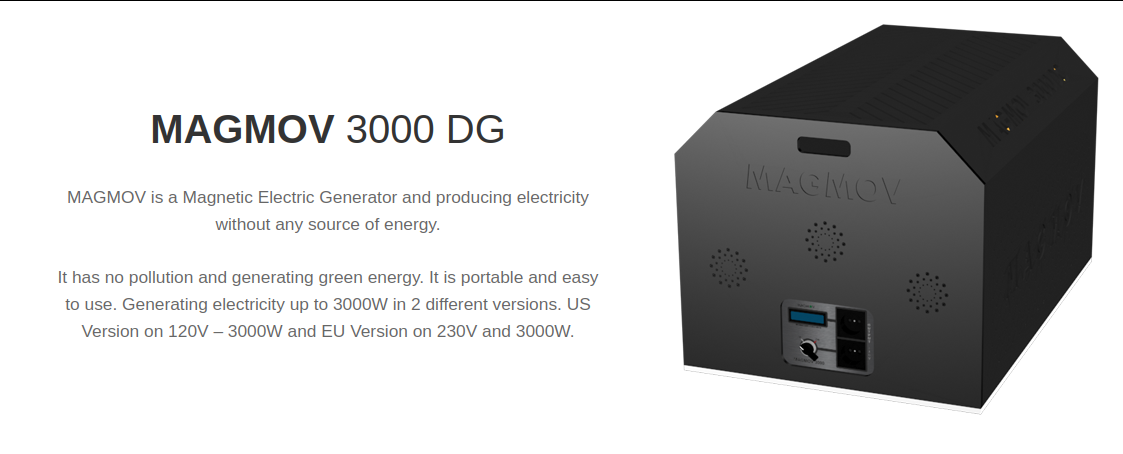
actual Generator 3000W
Conclusion
The overunity devices being developed by Terragen, InfinitySAV, and Magmov Energy provide real-world examples of how the theoretical concepts explored in earlier chapters—particularly those of Haramein, Russell, and Wolfram—are being applied in attempts to create revolutionary energy technologies. While each device focuses on different principles (resonance, magnetic induction, or computational phenomena), they all share the goal of providing clean, decentralized energy without reliance on traditional fuels.
Although the scientific community remains skeptical of overunity claims, the continuous development of these technologies, coupled with advancements in materials science, quantum mechanics, and computational modeling, may eventually lead to breakthroughs that push the boundaries of conventional energy systems.
In the next chapter, we will explore how further research into overunity devices can be supported and the role of academic and industrial collaboration in advancing this field. Additionally, we will discuss the long-term outlook for overunity technologies and how they may shape the future of global energy.
4. Holcomb Energy Systems: Magnetic Resonance Overunity Device
Website: Holcomb Energy Systems
Overview of Holcomb Energy Systems Technology
Holcomb Energy Systems (HES) presents a compelling claim to overunity technology through their development of the Holcomb Energy System (HES) Generator, which they assert can generate electricity through magnetic resonance without any traditional fuel sources. Their patented technology focuses on magnetic field interactions to amplify energy output beyond the input required to sustain the system, similar in concept to other magnetic-based overunity devices.
Device Concept: HES Magnetic Resonance Generator
Technology Overview:
- The HES Generator reportedly operates by utilizing a combination of magnetic fields and resonance amplification to generate more energy than it consumes. The device works by amplifying the interaction between magnetic fields and electromagnetic coils, which, once initialized, create a continuous flow of energy.
- Holcomb’s technology claims that by optimizing the interaction between magnetic fields, they can create a system where energy is extracted and amplified through precise configurations of coils and magnets, producing excess energy with minimal input.
Working Principles:
- Magnetic Resonance Amplification: The HES Generator uses a system of rotating magnetic fields interacting with coils to generate electrical current. The magnetic fields are arranged to resonate at a specific frequency that amplifies the energy produced by the system.
- Energy Conversion: The amplified magnetic energy is converted into electrical power using advanced converters and circuits designed to capture the excess energy generated by the magnetic interactions.
Potential Applications:
- Residential and Commercial Power: The HES Generator is aimed at providing decentralized power for homes and businesses. The system could be installed in homes to generate electricity, reducing reliance on grid power and offering a clean alternative to fossil fuel-based energy.
- Industrial Use: Larger-scale versions of the HES Generator could be implemented in industrial settings to provide continuous, low-cost energy for factories, data centers, and other large facilities.
Challenges:
- Scientific Validation: As with other overunity devices, the HES Generator needs independent validation through rigorous scientific testing to confirm its overunity claims. If it can be proven that the device indeed generates more energy than it consumes, it could revolutionize the energy industry.
- Scaling and Efficiency: While the HES Generator claims to be scalable, further testing is required to determine how efficient the device remains at larger scales and whether it can consistently provide sufficient energy for industrial or grid-scale applications.
Relevance to Haramein’s and Wolfram’s Theories:
- Haramein’s Theory: The HES Generator’s use of magnetic resonance amplification could relate to Haramein’s ideas about energy extraction from spacetime curvature and quantum vacuum fluctuations. The magnetic resonance within the generator may tap into energy sources that align with quantum field dynamics, amplifying magnetic interactions to produce sustained power.
- Wolfram’s Theory: Wolfram’s computational universe could provide a theoretical foundation for the magnetic resonance interactions seen in the HES Generator. The organized behavior of magnetic fields and their amplification could be explained as a manifestation of simple, rule-based interactions that produce complex emergent behavior, such as energy generation.
Holcomb Energy Systems and the Potential for Real-World Overunity
Holcomb Energy Systems positions itself as one of the more technically advanced overunity technology providers, with a focus on applying magnetic resonance principles to create practical energy solutions. Their HES Generator is specifically designed to serve residential, commercial, and industrial markets, making it a potential game-changer in the clean energy sector. The ability to generate electricity without relying on external fuels—if proven to be effective and scalable—would provide an attractive alternative to traditional energy systems.
Key Implications:
- Energy Independence: If Holcomb’s technology can be validated, it offers the potential for true energy independence, particularly for homes and businesses looking to go off-grid. This could be transformative for areas without reliable access to traditional energy infrastructure.
- Environmental Impact: With no need for fuel, the HES Generator could significantly reduce carbon emissions and environmental degradation associated with fossil fuel extraction and combustion. This aligns with global sustainability goals and could contribute to a substantial reduction in the world’s carbon footprint.
- Cost Reduction: The elimination of fuel costs, combined with the self-sustaining nature of the HES Generator, could drastically lower electricity prices, benefiting both consumers and businesses. The reduced operational costs would also make the device an attractive solution for industries with high energy demands.
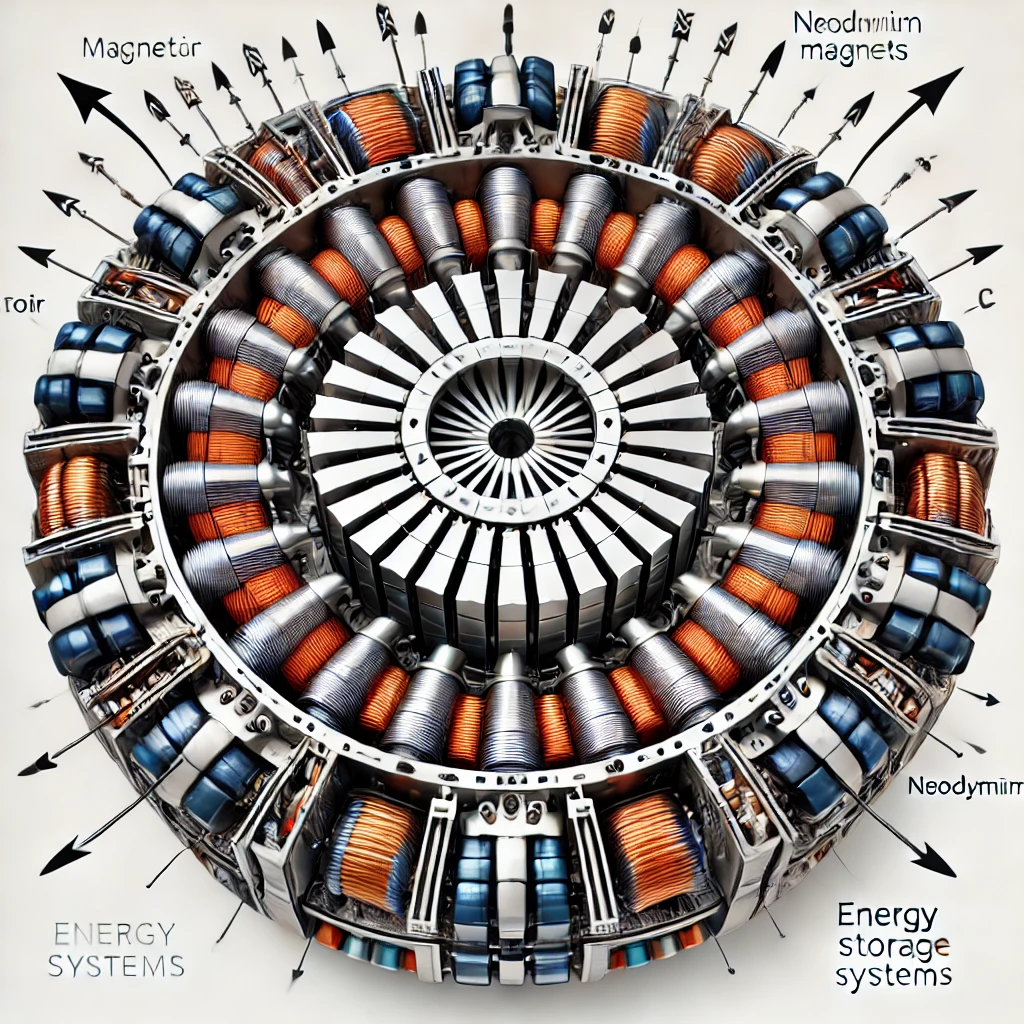
illustration for the Holcomb Energy Systems HES Generator
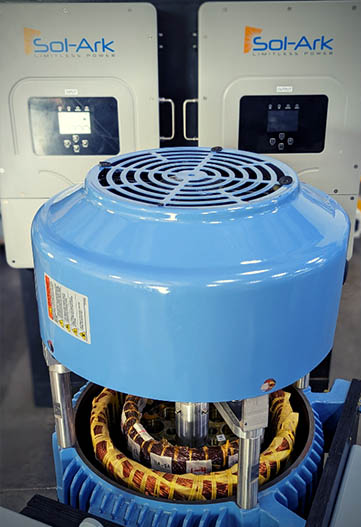
actual version of the generator
Comparative Analysis of Overunity Technologies
With the addition of Holcomb Energy Systems to the list of emerging overunity technologies, we now have a clearer picture of how various companies are attempting to apply principles of magnetic resonance, harmonic amplification, and computational structures to create real-world devices capable of generating excess energy.
| Technology | Core Principle | Device Type | Target Market | Potential Challenges |
|---|---|---|---|---|
| Terragen | Resonance with natural frequencies | Harmonic Resonator | Off-grid, industrial | Validating energy amplification; scaling for larger markets |
| InfinitySAV | Magnetic coupling and self-sustaining motion | Magnetic Motor Generator | Residential, commercial, industrial | Independent testing; durability of magnetic components |
| Magmov Energy | Magnetic induction with advanced materials | Magnetic Generator | Industrial, portable power solutions | Replication by third-party researchers; scaling for large-scale use |
| Holcomb Energy Systems | Magnetic resonance amplification | HES Magnetic Generator | Residential, commercial, industrial | Scientific validation; efficiency at industrial scale |
Each of these companies operates on different technological principles but shares a common goal: to provide a clean, decentralized energy solution that reduces reliance on fossil fuels and traditional power grids. While their success will depend on overcoming scientific skepticism and technical hurdles, the promise of overunity devices remains compelling.
The Hydro Magnetic Dynamo (HMD) – A Revolutionary Approach to Clean Energy
The Hydro Magnetic Dynamo (HMD), developed by Oleg V. Gritskevich, represents a significant leap in energy production technology. Conceived in the late 1980s, the HMD stands out for its potential to produce massive amounts of electrical energy without the need for conventional fuel sources, marking it as a pioneer in the realm of alternative energy.
1. Origins of the HMD
The concept for the Hydro Magnetic Dynamo (HMD) emerged during the 1980s when Gritskevich, a Russian scientist and inventor, developed a system that aimed to revolutionize electricity production by harnessing magnetohydrodynamic principles. Gritskevich’s work was motivated by the desire to create a system that could produce significant energy outputs without contributing to greenhouse gas emissions or relying on traditional fuel sources.
2. Design and Working Principle
At its core, the HMD operates by exploiting the interaction between magnetic fields and a conductive fluid, often water. When water moves through a magnetic field, it generates an electric current, a phenomenon that lies at the heart of the HMD’s function. This principle is rooted in magnetohydrodynamics (MHD), which studies the dynamics of electrically conducting fluids in the presence of magnetic fields. The HMD extends this concept, creating a device that can sustain and control these processes on a larger scale to generate continuous power.
Key aspects of the HMD’s operation include:
- Magnetic Fields: The device generates and maintains powerful magnetic fields to facilitate the movement of fluid through the dynamo system.
- Conductive Fluid: The fluid, which may be water or another conductive substance, interacts with the magnetic field to generate electricity.
- Energy Capture: The device captures the electric current produced by the fluid’s movement and converts it into usable electrical power.
3. Prototypes and Testing
Three prototypes of the HMD were developed during the late 1980s and 1990s. The first two experimental models were constructed in Vladivostok, Russia, during the late 1980s. These initial prototypes served as proof of concept, demonstrating that the HMD could generate electricity using magnetohydrodynamic principles.
The third and most advanced prototype was built in Armenia during the early 1990s. This semi-industrial prototype had a diameter of two meters and was tested over a five-year period (1992-1997). The results were impressive, with the device producing an average output of 1.5 MW and 3,000 amperes of electricity. In one test, the HMD achieved an output of 8 MW, showing the immense potential of this technology to meet large-scale energy needs.
Despite these promising results, the HMD project faced significant challenges. The success of the HMD threatened the Russian oil and gas industry, and as a result, the project was sabotaged. The lab where the HMD was housed was destroyed, and the dynamo unit itself was burned during a period of local conflict in Armenia in 1997. This marked a significant setback for the project, which has struggled to secure funding and attention since then.
4. Environmental Impact and Advantages
The HMD stands out for its environmental benefits, particularly its ability to generate electricity with minimal emissions. Unlike traditional power generation methods, the HMD does not require fossil fuels or large amounts of raw materials, making it a clean and sustainable option for the future.
Key environmental advantages include:
- No fuel requirement: Once operational, the HMD can run continuously without the need for external fuel sources. This feature greatly reduces the environmental footprint associated with energy production.
- No greenhouse gas emissions: The HMD does not release carbon dioxide or other harmful pollutants into the atmosphere, making it a significant alternative to fossil fuel-based energy systems.
- Low maintenance: The device has minimal maintenance requirements, reducing the need for ongoing operations that could contribute to environmental degradation.
- Compact design: The HMD has a small physical footprint compared to traditional power plants, making it easier to deploy in various environments without disrupting local ecosystems.
5. Technological Specifications
The HMD is distinguished by its unique construction and operational principles, which are designed to maximize efficiency while minimizing environmental impact. Key technological aspects of the HMD include:
- Nuclear reaction-based electricity generation: The HMD generates alpha particles—helium nuclei formed by the fusion of deuterium (a hydrogen isotope with one proton and one neutron). This process provides the HMD with its high electrical output.
- Charge clusters: High-density charge clusters created in the dynamo are essential for plasma-injected transmutation of elements and the neutralization of radioactive materials. Unlike fission reactors, the HMD does not accumulate radioactive components.
- Toroidal design: The HMD features a toroidal structure that houses internal copper tape windings, ensuring the efficient generation of electricity while cooling the system and maintaining a stable operating temperature.
The use of fractal geometry and piezoelectric materials enhances the efficiency of the energy capture process, while the external magnetic fields direct the energy from the dynamo into a usable current. This combination of innovative techniques ensures that the HMD operates efficiently and sustainably.
6. Challenges and the Road Ahead
The development and widespread adoption of the HMD face several challenges:
- Political and Industrial Opposition: The HMD’s potential to disrupt traditional energy markets has led to opposition from established industries, particularly oil and gas sectors.
- Lack of Funding: Despite the promising results of the early prototypes, the HMD has struggled to secure the necessary funding for further development and commercialization.
- Technological Hurdles: Although the HMD shows immense promise, there are still technical challenges to overcome, including refining the materials and processes involved in energy capture and improving the scalability of the device.
7. Future Prospects
Despite the setbacks, the future of the HMD looks promising. Advances in 3D printing and material science could provide the means to produce more efficient versions of the HMD at lower costs. Ongoing research in magnetohydrodynamics and plasma physics continues to build upon Gritskevich’s groundbreaking work, with the hope that the HMD or similar technologies may one day become a viable alternative to traditional power generation methods.
Additionally, as the world continues to seek out clean, renewable energy sources, the HMD’s ability to produce copious amounts of electricity without fuel input could place it at the forefront of the energy revolution.
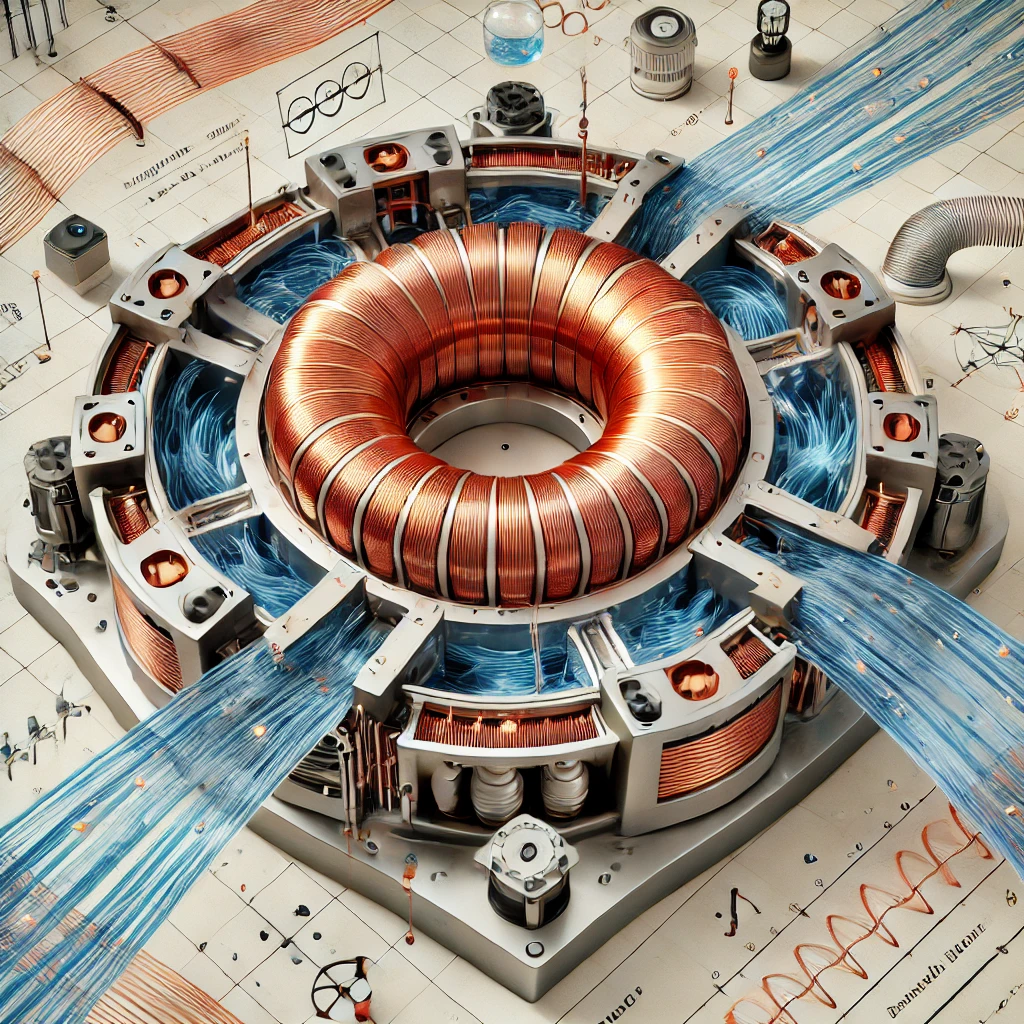
This detailed illustration showcases the Hydro Magnetic Dynamo (HMD), a device designed to generate electricity using magnetohydrodynamic principles. At the center of the device is a toroidal structure with copper tape windings, through which a conductive fluid flows, interacting with the magnetic fields to generate energy. Surrounding the torus, magnetic field lines are depicted, showing the flow of energy generated by the device. Arrows indicate the movement of the fluid and the energy capture process. The device is placed in a laboratory-like environment, with sensors and energy capture systems emphasizing the scientific and experimental setup. The illustration highlights the fusion of fluid dynamics and magnetic fields in the energy generation process, reflecting the innovative design of the HMD.
Conclusion
Holcomb Energy Systems, along with Terragen, InfinitySAV, and Magmov Energy, is pushing the boundaries of energy technology by exploring overunity concepts in practical, scalable devices. Each company is at the forefront of this emerging field, applying various principles of magnetic resonance, harmonic oscillation, and computational interactions to create systems that challenge our understanding of energy conservation and generation.
The future of overunity devices will depend on rigorous scientific validation, technological advancement, and large-scale testing. If successful, these technologies could redefine the energy landscape, providing affordable, clean energy to billions of people and reshaping industries worldwide.
In the next chapter, we will explore how these technologies could be integrated into existing energy infrastructure, the regulatory and economic challenges they face, and the future outlook for overunity research.
Chapter 8: Integration of Overunity Technologies into Existing Energy Infrastructure
Introduction
Overunity devices, if proven effective and scalable, represent a major breakthrough in energy technology. Their integration into existing energy infrastructure could potentially revolutionize the way electricity is generated, stored, and distributed. However, the transition to these technologies would require careful consideration of both technical and regulatory challenges, as well as a rethinking of global energy systems. This chapter explores how overunity devices could be incorporated into current energy grids, the economic and regulatory challenges they may face, and what the future holds for their large-scale deployment.
1. Integration of Overunity Devices into Power Grids
1.1. Decentralized Energy Systems
One of the primary benefits of overunity technologies, as highlighted by companies like Holcomb Energy Systems, Terragen, InfinitySAV, and Magmov Energy, is the potential for decentralized energy generation. Overunity devices could be installed at homes, businesses, and industrial sites, reducing or eliminating the need for centralized power plants.
Key Benefits of Decentralization:
- Energy Independence: Households and businesses could generate their own electricity, drastically reducing reliance on external power sources. This would create resilience against grid failures, natural disasters, or supply disruptions.
- Reduced Transmission Losses: Traditional power grids suffer from energy losses during transmission, particularly over long distances. By generating power close to the point of use, overunity devices would minimize these losses, improving overall energy efficiency.
- Lower Infrastructure Costs: Decentralized energy systems reduce the need for extensive infrastructure investments, such as high-voltage transmission lines and substations. This would lower the cost of expanding electricity access, especially in rural or remote areas.
1.2. Hybrid Energy Systems
Overunity devices could also be integrated into hybrid systems that combine traditional energy sources (e.g., solar, wind, hydroelectric) with overunity generators. Such hybrid systems would provide more stability, especially during the transition to widespread use of overunity devices.
Potential Hybrid Models:
- Solar and Overunity: Solar panels could provide electricity during the day, while overunity devices supplement energy production at night or during periods of low sunlight. The combination of renewable energy and overunity systems could provide a more consistent power supply.
- Wind and Overunity: Wind turbines, which depend on variable wind conditions, could be paired with overunity generators to maintain a stable energy output. When wind speeds drop, overunity devices could compensate for the reduction in energy production.
- Battery Storage and Overunity: Overunity devices could work alongside advanced energy storage systems, such as lithium-ion or solid-state batteries. Excess energy generated by overunity systems could be stored for later use, providing backup power during peak demand periods.
2. Economic Impacts and Challenges
2.1. Disruption of Traditional Energy Markets
The large-scale adoption of overunity technologies would likely disrupt traditional energy markets, particularly those based on fossil fuels. As these technologies mature and become more widely available, there will be significant shifts in how energy is produced and traded globally.
Key Economic Shifts:
- Decline of Fossil Fuels: As overunity devices replace fossil fuel-based power generation, demand for coal, oil, and natural gas will fall. This could lead to a devaluation of fossil fuel assets, particularly in countries that rely heavily on these resources for export income.
- Reduced Energy Costs: Overunity devices, once scaled, could drastically lower the cost of electricity. This would benefit consumers and businesses by reducing their operational expenses. The lowered energy costs would also create a more favorable environment for entrepreneurship and industrial growth.
- Impact on Utilities: Traditional utilities may face challenges as decentralized energy generation becomes more prevalent. Many utilities rely on centralized power plants and long-term energy contracts, which could become obsolete as consumers switch to generating their own power through overunity devices. Utilities may need to adapt their business models to focus on grid management, maintenance, and supplementary services rather than energy production.
2.2. Job Market Changes
As overunity technologies replace traditional energy generation methods, there will be shifts in the labor market. Job losses in fossil fuel industries may be offset by new opportunities in manufacturing, maintaining, and deploying overunity systems.
Potential Impacts on Employment:
- Decline in Fossil Fuel Jobs: As the global energy sector transitions away from fossil fuels, jobs in coal mining, oil drilling, and natural gas extraction will decline. Workers in these sectors may need to be retrained for roles in the emerging clean energy industries.
- Growth in Clean Energy Jobs: The deployment and maintenance of overunity devices will create new jobs in engineering, manufacturing, and installation. Additionally, industries that support the development of advanced materials, quantum technologies, and superconductors will experience growth, offering opportunities for workers in high-tech fields.
- Energy Services Sector: Utilities and energy companies may pivot toward offering energy services rather than energy production. This could include managing decentralized grids, providing maintenance and optimization for overunity systems, and offering consulting services to businesses looking to integrate overunity technologies.
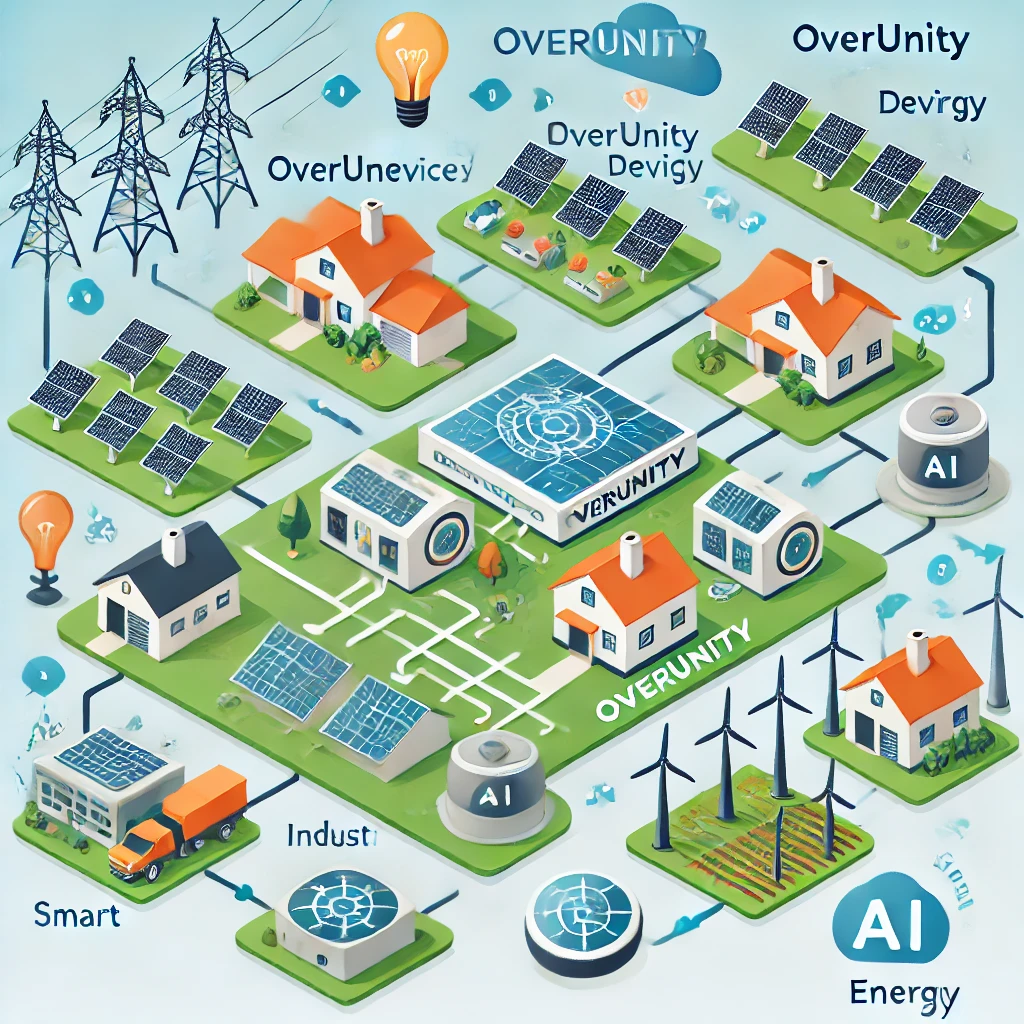
A diagram showing how overunity devices are integrated into a smart grid. The illustration includes homes, businesses, and industrial sites equipped with overunity devices, all connected to the grid. Arrows represent energy flow between the devices and the grid, with AI-driven systems monitoring and optimizing energy distribution in real-time. Renewable energy sources like solar panels and wind turbines are also part of the grid.
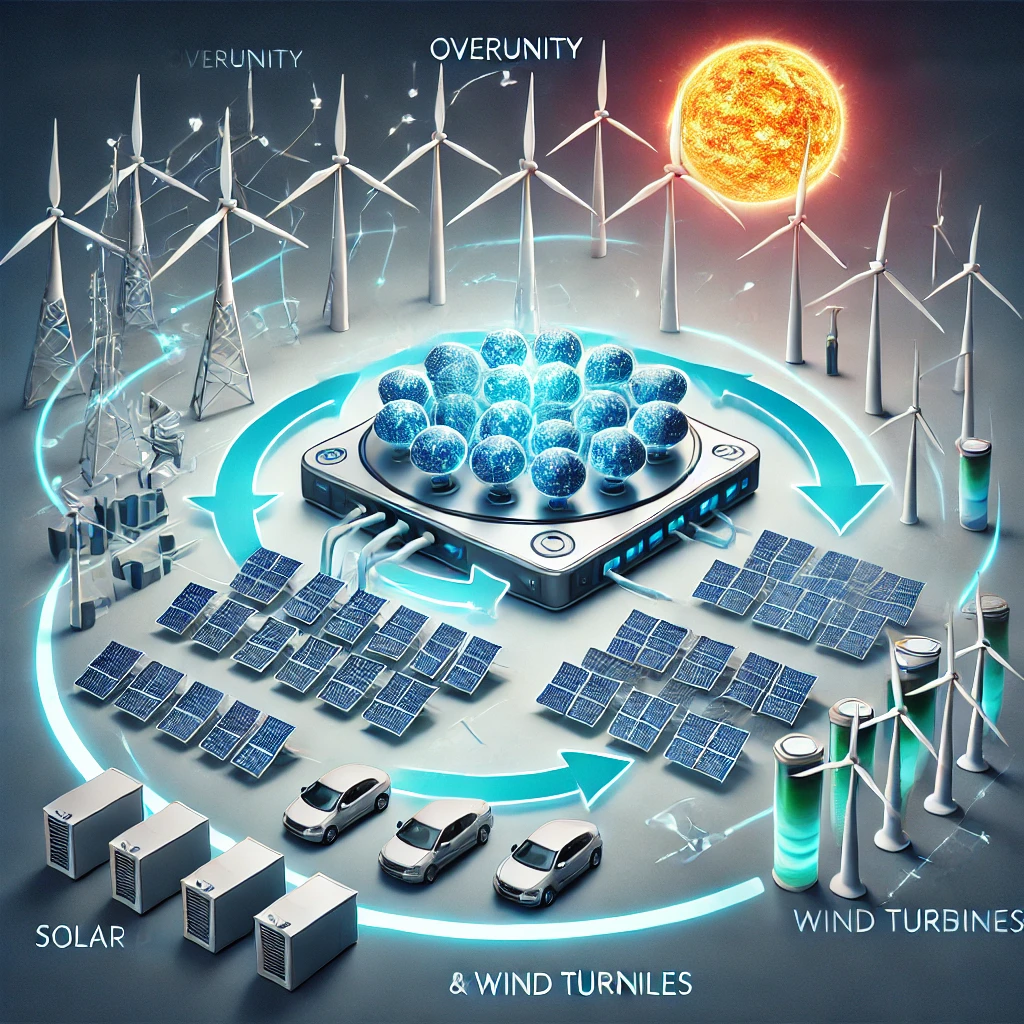
A visual representation of a hybrid energy system that combines overunity devices with solar panels and wind turbines. The illustration shows how these different energy sources complement each other, with arrows indicating the flow of energy between the overunity devices, solar, wind, and storage systems. The energy is stored in advanced batteries and distributed efficiently to meet demand.
3. Regulatory Challenges
3.1. Validation and Certification
One of the biggest hurdles for overunity technologies is gaining regulatory approval and certification. As these devices challenge traditional scientific laws of energy conservation, regulatory bodies may be hesitant to approve them without extensive testing and verification.
Key Regulatory Issues:
- Scientific Validation: Regulatory agencies, such as the International Electrotechnical Commission (IEC) and national energy boards, will require extensive proof that overunity devices are safe, reliable, and efficient. This will involve rigorous third-party testing to verify the devices’ performance claims.
- Standards Development: As overunity devices represent a new category of energy technology, existing standards may not be sufficient to evaluate them. New standards will need to be developed to address the unique operational characteristics of these devices, including how they interact with existing energy grids and infrastructure.
- Patents and Intellectual Property: Overunity technologies, particularly those developed by companies like Holcomb Energy Systems, Terragen, and InfinitySAV, will likely be protected by patents. Regulatory bodies must ensure that intellectual property rights are respected while promoting innovation and competition in the sector.
3.2. Safety and Reliability
As with any new technology, overunity devices must meet strict safety and reliability standards. Given that overunity devices often involve advanced materials, magnetic fields, and potentially complex energy systems, ensuring their safe operation is critical.
Key Safety Considerations:
- Magnetic and Electromagnetic Interference: Overunity devices that rely on magnetic fields (such as those developed by Holcomb and Magmov) may produce strong electromagnetic fields. These fields could interfere with nearby electronic devices or communications systems if not properly shielded.
- Materials and Durability: Many overunity devices use advanced materials like superconductors, graphene, or rare earth magnets. Ensuring that these materials can withstand long-term operation without degradation or failure will be essential for their safe deployment in homes and businesses.
- Grid Integration: For overunity devices that feed energy back into the grid, managing the interaction between traditional grid infrastructure and decentralized energy systems will be crucial. This includes ensuring that voltage, frequency, and power quality are maintained to prevent grid instability or blackouts.
4. Long-Term Outlook for Overunity Technologies
4.1. Technological Advancements
The long-term success of overunity devices depends on continued advancements in several key areas of science and technology. As research in quantum mechanics, materials science, and computational physics progresses, overunity devices will become more efficient, scalable, and reliable.
Key Areas of Research:
- Quantum Vacuum Energy: Further research into quantum field theory and vacuum energy will provide deeper insights into how devices like Haramein’s Quantum Vacuum Resonator could extract usable energy from the fabric of spacetime.
- Advanced Materials: The development of new superconductors, nanomaterials, and energy storage technologies will improve the efficiency and performance of overunity systems. These materials will need to be cost-effective, durable, and easy to manufacture at scale.
- Artificial Intelligence and Automation: AI could play a key role in optimizing the performance of overunity devices. Machine learning algorithms could monitor and adjust energy output in real-time, maximizing efficiency and ensuring that the devices operate safely and reliably.
4.2. Global Energy Transformation
If overunity devices reach commercial maturity, they will fundamentally transform the global energy landscape. The widespread deployment of these technologies could lead to a more sustainable, equitable, and resilient energy system.
Key Transformations:
- Universal Energy Access: Overunity devices could be deployed in regions that currently lack access to reliable electricity. This would help bridge the energy gap between developed and developing countries, contributing to global economic development and improved living standards.
- Sustainability and Climate Change: By eliminating the need for fossil fuels, overunity devices could play a critical role in addressing climate change. The reduction in greenhouse gas emissions, combined with the decentralization of energy generation, would help stabilize global temperatures and mitigate the worst effects of climate change.
- Energy Sovereignty: Countries that currently depend on energy imports could achieve energy sovereignty by deploying overunity devices. This would reduce geopolitical tensions over energy resources and contribute to a more stable and peaceful global economy.
5. Case Studies: Potential Deployment Scenarios
5.1. Overunity in Rural Electrification
In regions like sub-Saharan Africa, where more than 600 million people lack access to electricity, overunity devices could be deployed to provide decentralized energy solutions.
Deployment Model:
- Small, modular overunity systems could be installed in villages, providing continuous electricity for lighting, water pumps, and communication systems. These systems could be maintained locally, reducing the need for large-scale infrastructure projects.
5.2. Industrial Deployment in High-Energy-Use Sectors
Industries with high energy demands, such as manufacturing, mining, and data centers, could benefit from overunity systems by reducing their reliance on external power sources.
Deployment Model:
- Overunity devices like the HES Generator or the Magmov Energy system could be integrated into industrial plants, providing continuous power for machinery and equipment. This would reduce operational costs and improve energy efficiency.
5.3. Urban Integration with Smart Grids
In developed urban areas, overunity devices could be integrated with smart grids to optimize energy use and reduce grid dependency.
Deployment Model:
- Households equipped with overunity devices could generate electricity locally and feed excess energy back into the grid. Smart meters and AI-driven energy management systems would optimize the flow of energy, ensuring that both the grid and individual homes operate at peak efficiency.
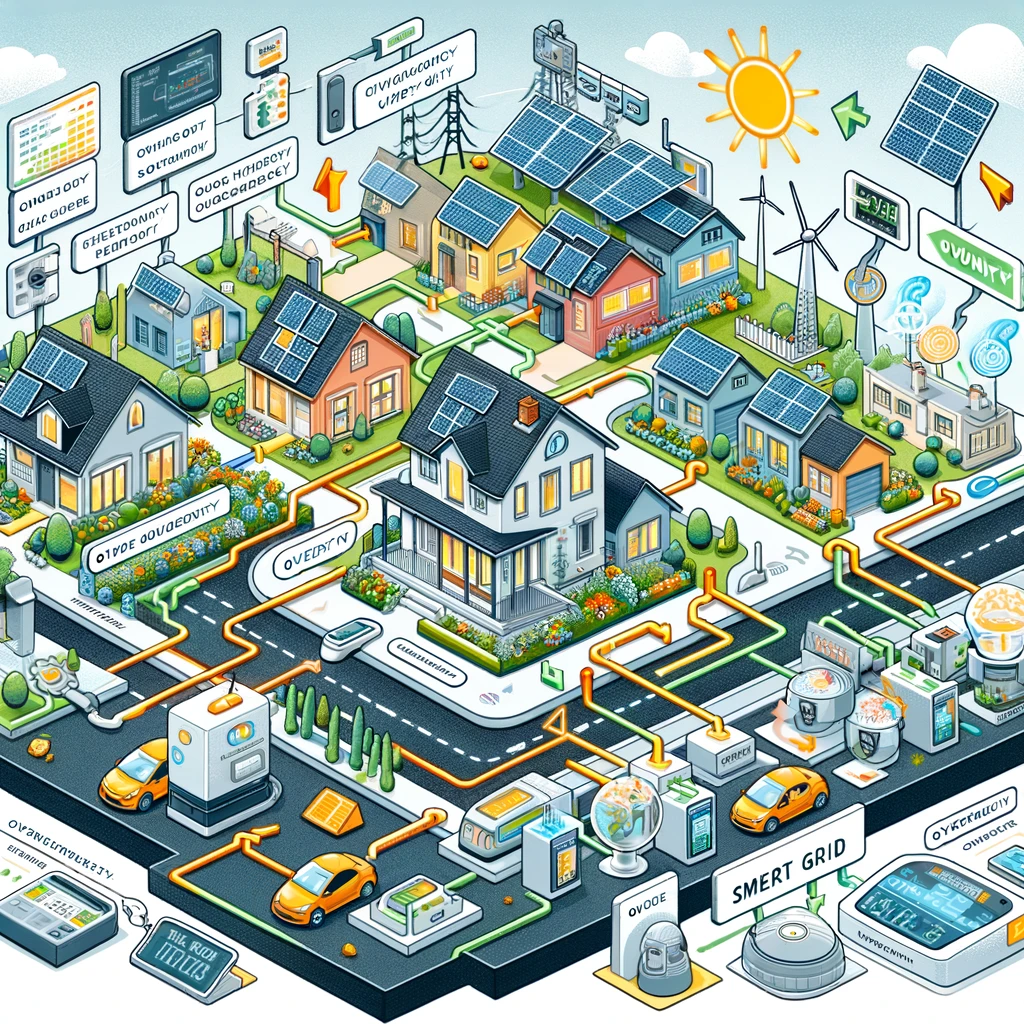
illustration depicting how overunity devices integrate with a smart grid, including homes, businesses, and renewable energy sources like solar panels and wind turbines.

A world map showing the potential global adoption of overunity devices. Different regions are highlighted to represent where overunity devices could reduce energy poverty, lower carbon emissions, and disrupt traditional energy markets. Icons representing energy independence, environmental sustainability, and industrial transformation are placed in various regions.
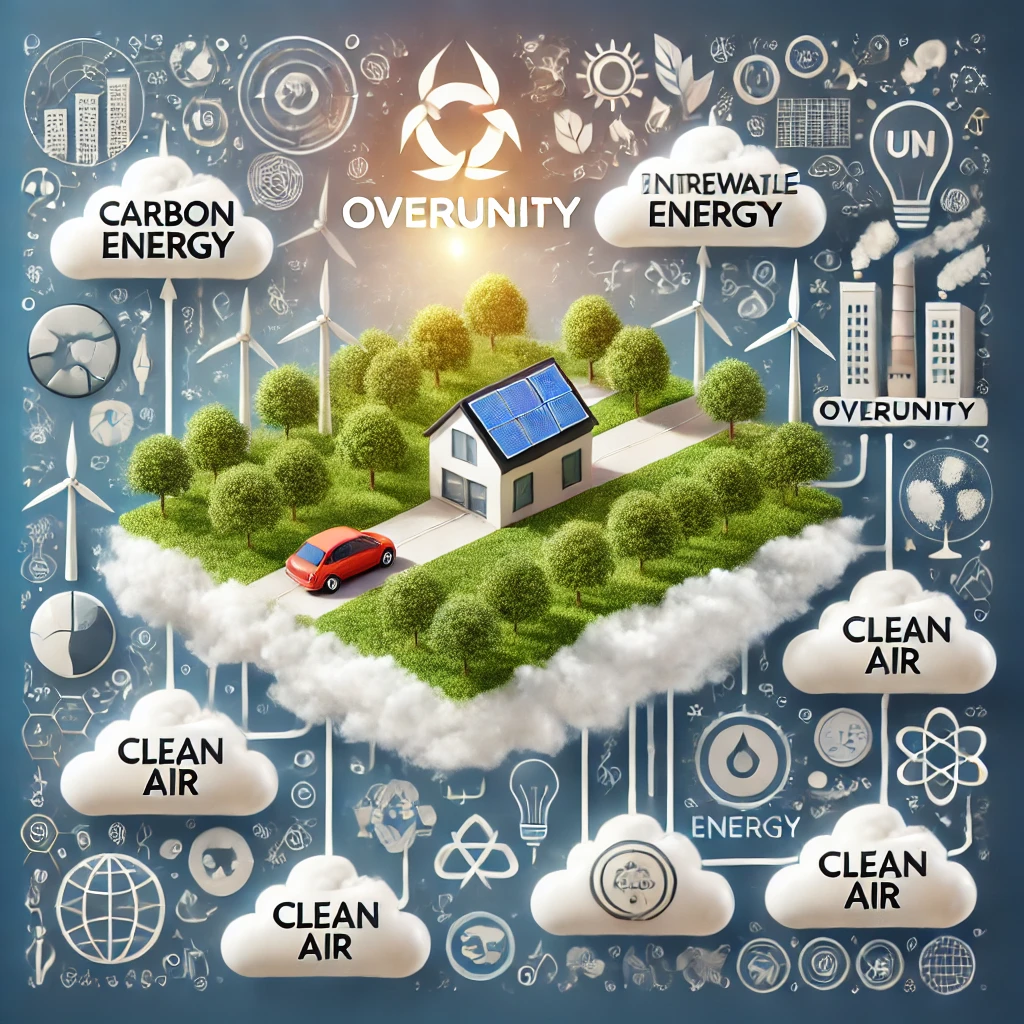
A diagram illustrating the environmental benefits of overunity technologies. The image shows overunity devices reducing carbon emissions, improving air quality, and minimizing environmental impact. Symbols for renewable energy, clean air, and sustainable development are placed around the devices, highlighting their potential to address climate change and reduce pollution.
Conclusion
The integration of overunity technologies into existing energy infrastructure offers a glimpse of a future where energy is abundant, decentralized, and environmentally sustainable. However, the path to realizing this vision will require significant technological advancements, regulatory adjustments, and societal adaptation. By overcoming these challenges, overunity devices could transform the global energy landscape, contributing to a more equitable, sustainable, and resilient future.
In the next chapter, we will summarize the key findings from this ebook and offer a final outlook on the future of overunity research and its potential to reshape global energy systems.
Chapter 9: Final Thoughts and Future Outlook for Overunity Technologies
Introduction
Throughout this ebook, we have explored the theoretical foundations, real-world applications, and potential global impacts of overunity technologies, focusing on the work of Nassim Haramein, Walter Russell, and Stephen Wolfram, alongside the latest developments from innovative companies such as Holcomb Energy Systems, Terragen, InfinitySAV, and Magmov Energy. These theories and technologies offer a bold reimagining of how energy is produced and used, promising a future where energy is abundant, clean, and accessible to all.
In this concluding chapter, we summarize the key findings from our exploration of overunity devices, reflect on the challenges and opportunities that lie ahead, and offer a future outlook for the continued development and integration of these technologies.
1. Key Takeaways from Unified Theories and Overunity Technologies
1.1. Theoretical Foundations
The work of Haramein, Russell, and Wolfram provides a rich theoretical basis for the development of overunity devices, each offering unique perspectives on how energy and matter emerge from the fundamental structure of the universe:
- Nassim Haramein’s Quantum Vacuum Theory: Haramein’s unified field theory suggests that energy can be extracted from the quantum vacuum, which contains vast amounts of fluctuating energy. His concepts of spacetime curvature and quantum resonance offer promising avenues for developing devices that tap into the vacuum’s hidden energy potential.
- Walter Russell’s Wave-Based Cosmology: Russell’s vision of the universe as a rhythmic, oscillatory system provides a framework for understanding how energy can be amplified and extracted from harmonic cycles. His ideas about the interplay between centripetal and centrifugal forces inspire technologies that mimic these natural cycles to generate energy.
- Stephen Wolfram’s Computational Universe: Wolfram’s theory of a universe governed by simple computational rules suggests that energy is an emergent property of the interactions between discrete elements, such as hypergraphs. His model opens the door to developing energy systems that manipulate the computational processes of the universe to produce usable power.
1.2. Practical Overunity Technologies
The real-world efforts to develop overunity devices, as seen in the technologies from Holcomb Energy Systems, Terragen, InfinitySAV, and Magmov Energy, demonstrate the potential to translate these theoretical ideas into working systems:
- Holcomb Energy Systems (HES Generator): This magnetic resonance-based system claims to generate electricity without fuel by amplifying magnetic field interactions. Holcomb Energy Systems is working to commercialize their device for residential, commercial, and industrial use, positioning it as a practical solution for decentralized energy generation.
- Terragen: Using resonance technology to capture and amplify natural frequencies, Terragen is focused on providing clean, off-grid power solutions by tapping into the harmonic interactions in the environment.
- InfinitySAV and Magmov Energy: Both companies leverage magnetic motor technologies to generate electricity. InfinitySAV’s magnetic motor and Magmov’s magnetic generator operate through magnetic induction and self-sustaining motion, potentially offering scalable energy solutions for homes and businesses.
Each of these companies is pushing the boundaries of traditional energy systems, but they face significant challenges in proving their technologies’ overunity claims and achieving wide-scale deployment.
2. Challenges and Opportunities for Overunity Devices
2.1. Challenges
The development and adoption of overunity devices face a number of technical, scientific, and regulatory challenges:
- Scientific Skepticism: Overunity technologies challenge well-established scientific principles, particularly the laws of thermodynamics. To gain acceptance, these devices must undergo rigorous, independent testing and validation by the broader scientific community.
- Regulatory Barriers: Regulatory approval for overunity devices will depend on their safety, reliability, and scalability. As these technologies represent a new class of energy systems, regulators will need to develop new standards to ensure their proper integration into existing energy grids.
- Technological Limitations: Scaling overunity devices from prototypes to fully functional systems capable of meeting industrial and commercial demands will require significant advancements in materials science, quantum physics, and energy storage. The development of cost-effective, durable materials—such as superconductors or advanced magnets—will be essential for the widespread adoption of overunity devices.
2.2. Opportunities
Despite the challenges, the potential benefits of overunity technologies are enormous, offering opportunities to transform energy production, distribution, and consumption:
- Decentralized Energy Generation: Overunity devices could empower communities to generate their own electricity, reducing reliance on centralized grids and promoting energy independence. This is particularly important for remote or underserved areas where access to traditional energy infrastructure is limited.
- Environmental Sustainability: By eliminating the need for fossil fuels, overunity devices offer a path toward a zero-carbon future. Their ability to provide clean, abundant energy would significantly reduce global carbon emissions and help mitigate the impacts of climate change.
- Economic Growth: The deployment of overunity technologies could create new industries and job opportunities, particularly in manufacturing, installation, and maintenance. As the cost of energy production decreases, businesses could reinvest savings into innovation, research, and expansion, driving economic growth.
- Resilience and Security: Overunity devices could enhance energy security by reducing dependence on foreign energy imports and protecting against supply disruptions. They would also provide greater resilience against natural disasters, as decentralized energy systems are less vulnerable to damage than centralized power plants.
3. The Path Forward: Research and Development
To bring overunity technologies from the lab to widespread use, several areas of research and development need to be prioritized:
- Advanced Materials: Continued research into superconducting materials, nanotechnology, and magnetic materials will be crucial for improving the efficiency and scalability of overunity devices. These materials must be lightweight, cost-effective, and capable of operating under extreme conditions for long periods.
- Quantum Mechanics and Computational Physics: Deeper exploration of quantum field theory and computational models of the universe will help refine the theoretical underpinnings of overunity technologies. Understanding how energy emerges from the quantum vacuum or from computational structures like hypergraphs will provide a clearer path to practical applications.
- Collaboration Between Academia and Industry: Collaboration between academic researchers, private companies, and government agencies will be essential to accelerate the development and validation of overunity devices. Joint efforts will be needed to fund large-scale trials, develop regulatory frameworks, and address the technical challenges facing these technologies.
- Public Awareness and Education: Raising awareness of overunity technologies and their potential benefits will be key to securing public support and investment. Educational initiatives and outreach efforts will help demystify these technologies and build trust among consumers, scientists, and policymakers.
4. Future Outlook for Overunity Technologies
Looking to the future, overunity technologies have the potential to become a cornerstone of the global energy system, offering a clean, sustainable, and decentralized alternative to fossil fuels. However, achieving this vision will require continued innovation, collaboration, and perseverance.
Short-Term Outlook (5-10 Years):
- Proof of Concept: In the near term, overunity technologies will likely focus on demonstrating proof of concept through small-scale prototypes and pilot projects. Companies like Holcomb Energy Systems, InfinitySAV, and Magmov Energy will need to conduct rigorous, third-party testing to validate their claims and gain regulatory approval.
- Early Adoption in Niche Markets: Overunity devices may first find success in niche markets, such as off-grid power systems, remote industrial sites, or disaster relief operations. These applications will allow the technology to mature and prove its value in real-world conditions.
Long-Term Outlook (10-30 Years):
- Widespread Deployment: As overunity devices become more efficient and scalable, they will be increasingly integrated into mainstream energy systems. Decentralized overunity systems could complement or even replace centralized grids, providing homes, businesses, and industries with clean, self-sustaining energy.
- Global Energy Transformation: Over the long term, overunity technologies could help usher in a global energy transformation, reducing carbon emissions, stabilizing the climate, and democratizing access to energy. The widespread availability of low-cost, abundant energy would spur economic development, improve living standards, and enhance geopolitical stability.
Conclusion
The pursuit of overunity technologies represents one of the most ambitious and exciting challenges in modern science and engineering. By rethinking the fundamental principles of energy production, companies and researchers are pushing the boundaries of what is possible, drawing inspiration from groundbreaking theoretical frameworks like those of Nassim Haramein, Walter Russell, and Stephen Wolfram.
While significant challenges remain, the potential rewards of overunity technologies are too great to ignore. These devices offer the promise of a clean, decentralized, and abundant energy future—one that could transform society, protect the environment, and provide energy independence to communities around the world.
As research continues, we stand on the brink of a new era in energy technology, where overunity devices could redefine the relationship between humanity and the energy that powers our world.
Appendix: Technical Specifications and Future Research Directions for Overunity Devices
1. Technical Specifications of Overunity Devices
This appendix provides a detailed breakdown of the technical components, materials, and operational principles behind some of the key overunity devices discussed throughout the ebook. For researchers, engineers, and energy enthusiasts, these specifications offer insight into the technological requirements for overunity systems, as well as areas where further advancements could push the field forward.
1.1. Holcomb Energy Systems: HES Generator
Core Principle: Magnetic Resonance Amplification
Key Components:
- Magnetic Rotor: The heart of the HES Generator is its rotor, composed of advanced magnetic materials that interact with electromagnetic coils to produce motion and generate electricity.
- Electromagnetic Coils: Precision-wound coils are used to capture the amplified magnetic fields generated by the rotor’s motion. The interaction between the coils and the rotor is critical for maintaining the energy amplification effect.
- Energy Storage and Output: Once the amplified energy is generated, it is converted into electrical power via an inverter or similar device. Advanced storage systems, such as supercapacitors or high-efficiency batteries, can be integrated to store excess energy for later use.
Performance Metrics:
- Input vs. Output Energy: The primary claim of the HES Generator is that its magnetic resonance allows it to produce more electrical output than the energy required to keep the system in motion. The device’s input is minimal once initiated, and the output can theoretically sustain homes, businesses, or industrial sites.
- Efficiency: The efficiency of the HES Generator depends on the quality of the magnetic materials and the precision of the coil winding. Magnetic losses and friction reduction are key areas of improvement to ensure long-term reliability.
Materials:
- Rare Earth Magnets: Neodymium magnets or other high-strength magnetic materials are likely used to ensure that the rotor produces strong magnetic fields.
- Advanced Conductors: Superconducting materials could be integrated into future versions to reduce energy losses in the coils and boost overall efficiency.
1.2. Terragen: Resonant Harmonic Generator
Core Principle: Harmonic Resonance with Natural Frequencies
Key Components:
- Resonance Chamber: Terragen’s device uses a specially designed chamber that captures and amplifies natural electromagnetic frequencies, such as the Earth’s geomagnetic field or ambient electromagnetic radiation.
- Harmonic Amplifier: The amplifier interacts with the captured frequencies, enhancing their amplitude through constructive interference. The resulting resonance generates electrical energy that is stored or directly used.
- Energy Conversion Unit: Once the amplified frequencies are captured, they are converted into usable electrical power through converters that are optimized for low-energy waveforms.
Performance Metrics:
- Natural Frequency Range: The device operates across a range of frequencies, typically within the low-frequency spectrum where natural electromagnetic waves are abundant.
- Energy Output: While early prototypes are aimed at powering small, off-grid systems, future versions may scale to industrial applications depending on the efficiency of the harmonic amplification process.
Materials:
- Resonant Cavity Materials: Dielectric materials or advanced ceramics are likely used to ensure that the resonance chamber maintains its integrity and efficiency over time.
- Piezoelectric Materials: These materials could be used to convert mechanical vibrations from resonance into electrical energy, further amplifying the device’s output.
1.3. InfinitySAV: Magnetic Motor Generator
Core Principle: Magnetic Induction and Self-Sustaining Motion
Key Components:
- Permanent Magnet Rotor: The InfinitySAV motor uses a rotor composed of permanent magnets arranged to create a self-sustaining rotational motion once initiated.
- Electromagnetic Stator: The stator consists of electromagnetic coils that interact with the rotating magnets to generate electricity. The interaction is designed to sustain motion without additional external energy input after initiation.
- Energy Control Unit: This unit manages the conversion of mechanical energy from the rotating motor into electrical power. It also regulates the system’s energy balance to maintain continuous operation.
Performance Metrics:
- Rotational Speed and Torque: The key to InfinitySAV’s design is achieving a balance between the magnetic forces that maintain rotation and the electrical output generated by the stator. The system aims to minimize friction and losses to sustain motion indefinitely.
- Energy Output: The output varies depending on the scale of the motor. The device is designed for both small-scale home energy systems and larger commercial applications.
Materials:
- Permanent Magnets: Neodymium or similar rare earth magnets are used for their strong magnetic properties and ability to sustain high-energy fields over long periods.
- Conductive Materials: High-efficiency copper or superconductors are used in the stator to ensure that the generated electricity is efficiently captured and transmitted.
1.4. Magmov Energy: Magnetic Generator
Core Principle: Magnetic Field Rotation and Amplification
Key Components:
- Rotating Magnetic Core: Magmov’s generator relies on a rotating core made of magnets that interact with a series of electromagnetic coils arranged around the rotor.
- Electromagnetic Coils: The coils capture the rotating magnetic fields and generate an electrical current. The arrangement of the coils is designed to maximize energy capture and amplification.
- Energy Storage System: The generated electricity is stored in high-capacity batteries or capacitors, ensuring a consistent energy output even when demand fluctuates.
Performance Metrics:
- Rotational Stability: The system’s ability to maintain a constant rotational speed without significant friction or energy losses is critical for sustained overunity performance.
- Energy Output: Magmov claims that its system can generate enough energy to meet the needs of small businesses or households, though further testing is needed to validate these claims.
Materials:
- Magnetic Alloys: The magnets used in the core are likely a combination of neodymium and other rare earth elements designed to maintain strong magnetic fields.
- Electromagnetic Winding Materials: Copper or other highly conductive materials are used for the coil windings to ensure maximum efficiency in energy capture.
2. Future Research Directions
The field of overunity technologies is still in its early stages, but with advancements in key areas of physics, materials science, and engineering, there are clear paths for future research to explore. Below are several areas where future research could accelerate the development of overunity devices.
2.1. Quantum Field Research
Theoretical research into quantum vacuum energy, spacetime fluctuations, and the nature of zero-point energy could provide a stronger foundation for devices like the Quantum Vacuum Resonator. By understanding how energy emerges from the quantum field, researchers could refine the mechanisms for capturing and amplifying this energy, leading to more efficient devices.
Focus Areas:
- Zero-Point Energy Harvesting: Investigating methods to stabilize and capture energy from quantum fluctuations at the Planck scale.
- Spacetime Curvature and Energy Extraction: Exploring how small-scale curvature, such as that found around protons or black holes, can be harnessed for energy generation.
2.2. Advanced Materials Development
Superconductors, graphene, metamaterials, and nanostructures will be crucial for improving the efficiency and scalability of overunity devices. These materials can significantly reduce energy losses and increase the output of magnetic, harmonic, or computational systems.
Focus Areas:
- Room-Temperature Superconductors: Developing superconducting materials that can operate at higher temperatures would revolutionize overunity systems by minimizing resistive losses.
- Nanostructured Magnets: Research into nano-scale magnetic materials could increase the energy density and efficiency of magnetic motor systems.
2.3. Machine Learning and AI Integration
As overunity devices become more complex, integrating artificial intelligence (AI) and machine learning could optimize their performance in real-time. AI systems could monitor energy output, adjust operational parameters, and ensure that devices operate at peak efficiency.
Focus Areas:
- AI for Real-Time Monitoring: Machine learning algorithms could detect inefficiencies or energy losses in overunity systems and make automatic adjustments to improve performance.
- Energy Prediction Models: AI systems could model and predict energy demand, optimizing the use of overunity devices in hybrid grids or large-scale power systems.
Conclusion
This appendix has provided an in-depth look at the technical specifications of various overunity devices, as well as future research directions that could help bring these technologies to maturity. The integration of advanced materials, quantum physics, and AI will be crucial for the continued evolution of overunity systems, allowing them to fulfill their potential as clean, decentralized energy solutions.
As this field continues to develop, interdisciplinary collaboration between physicists, engineers, and material scientists will be essential for overcoming the challenges and unlocking the true power of overunity technologies.
